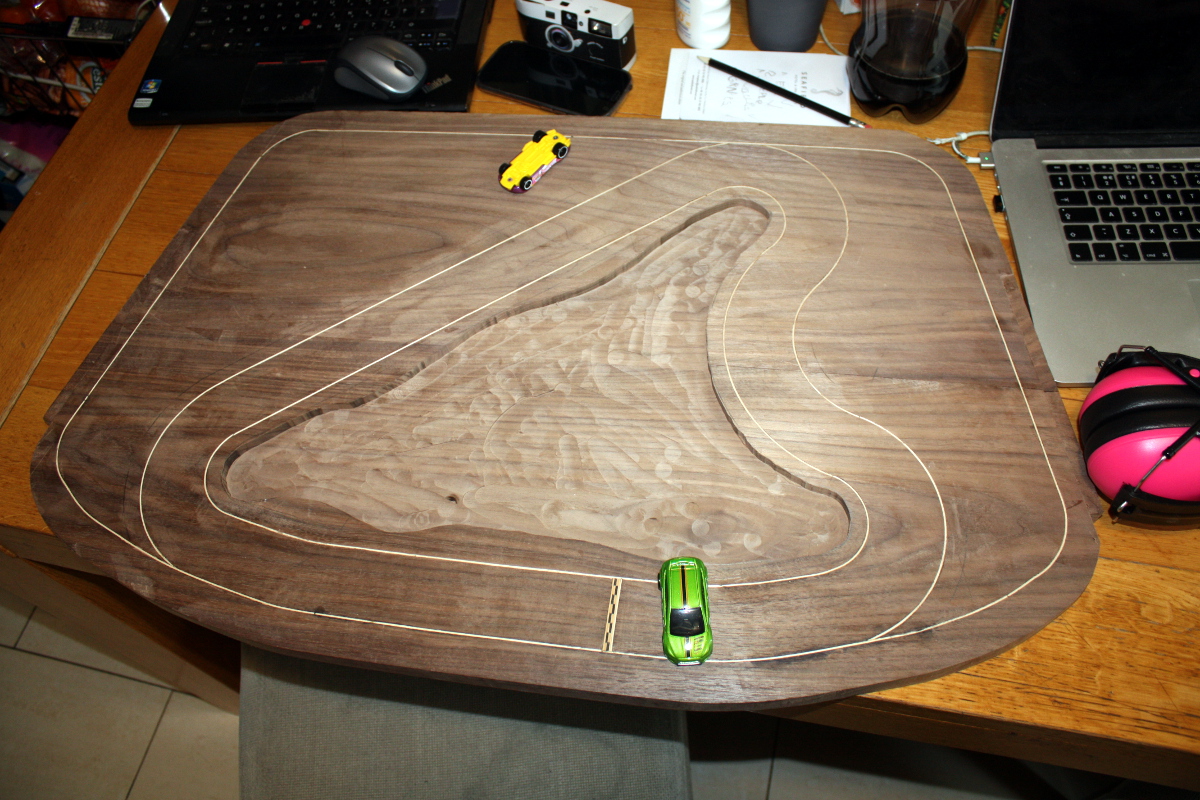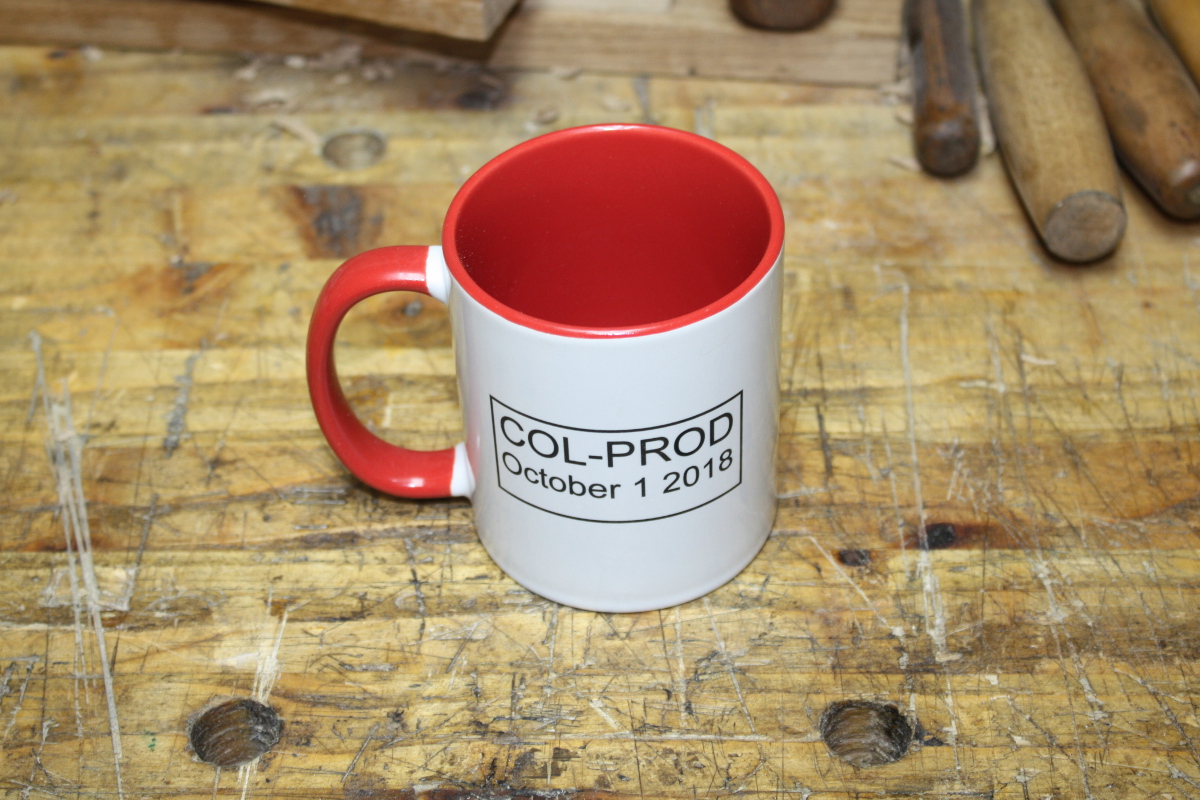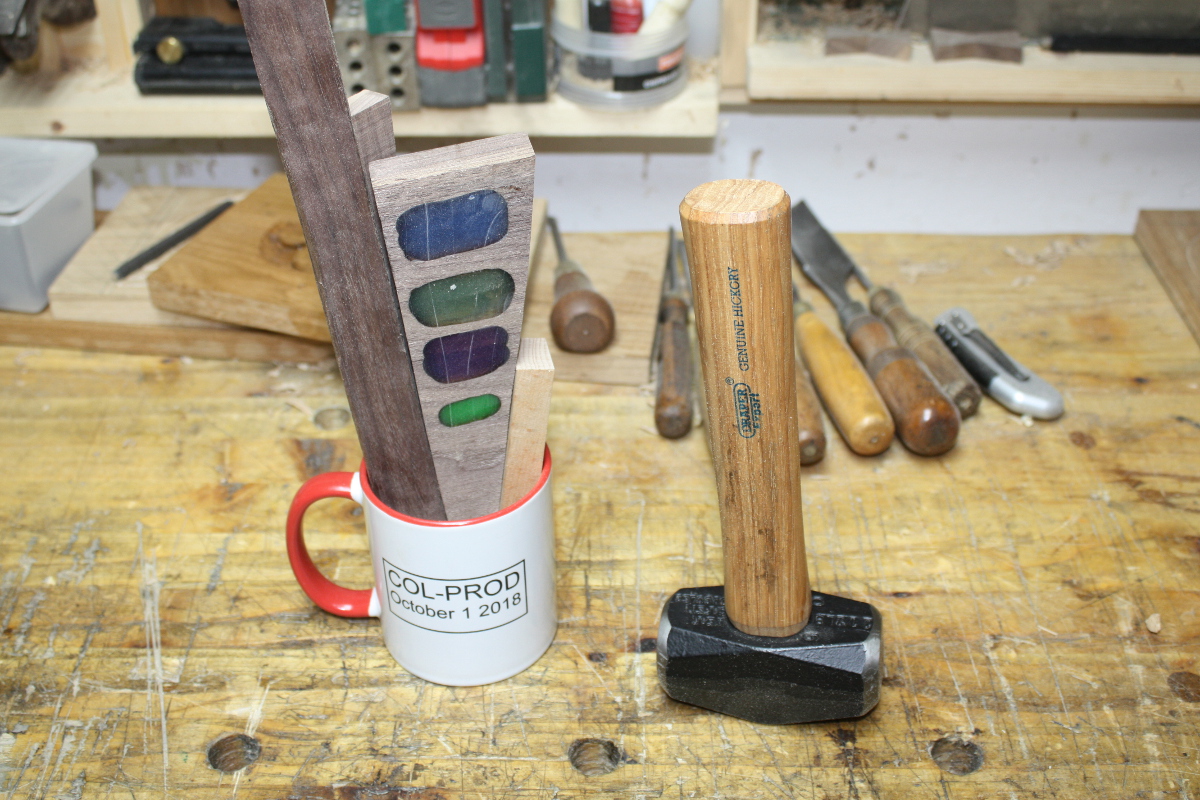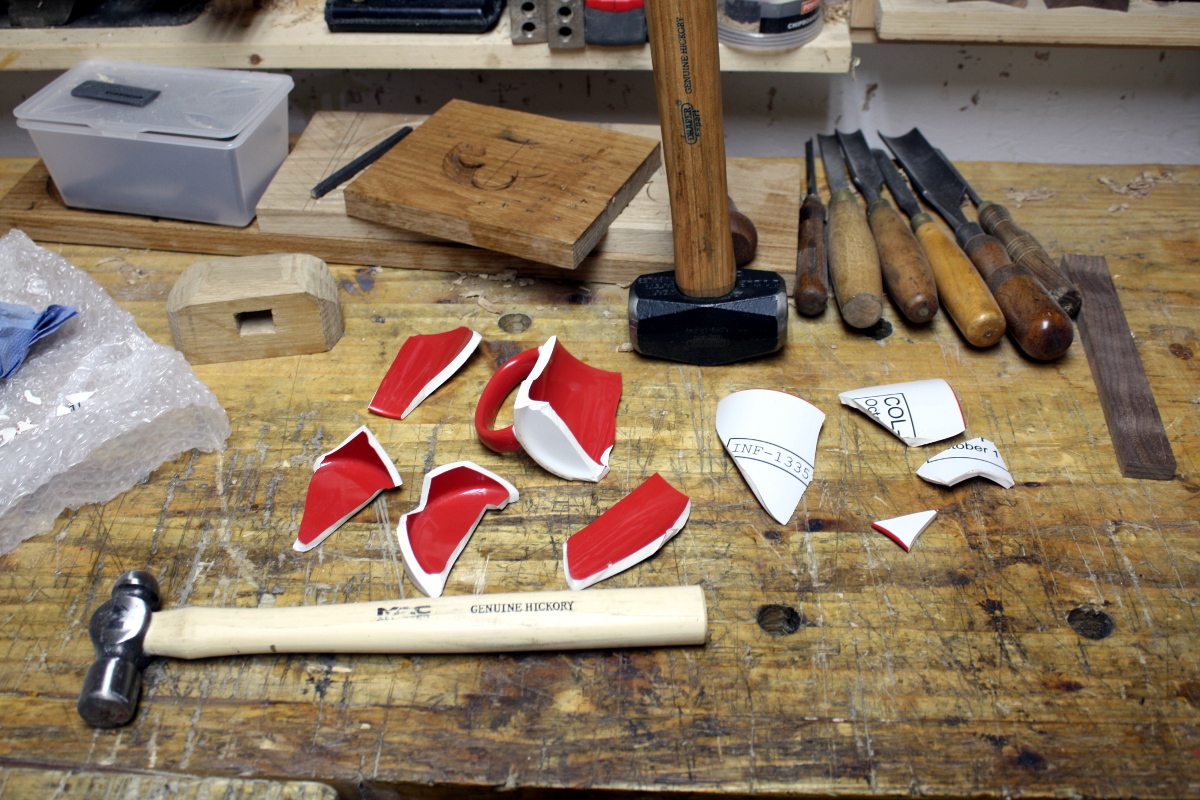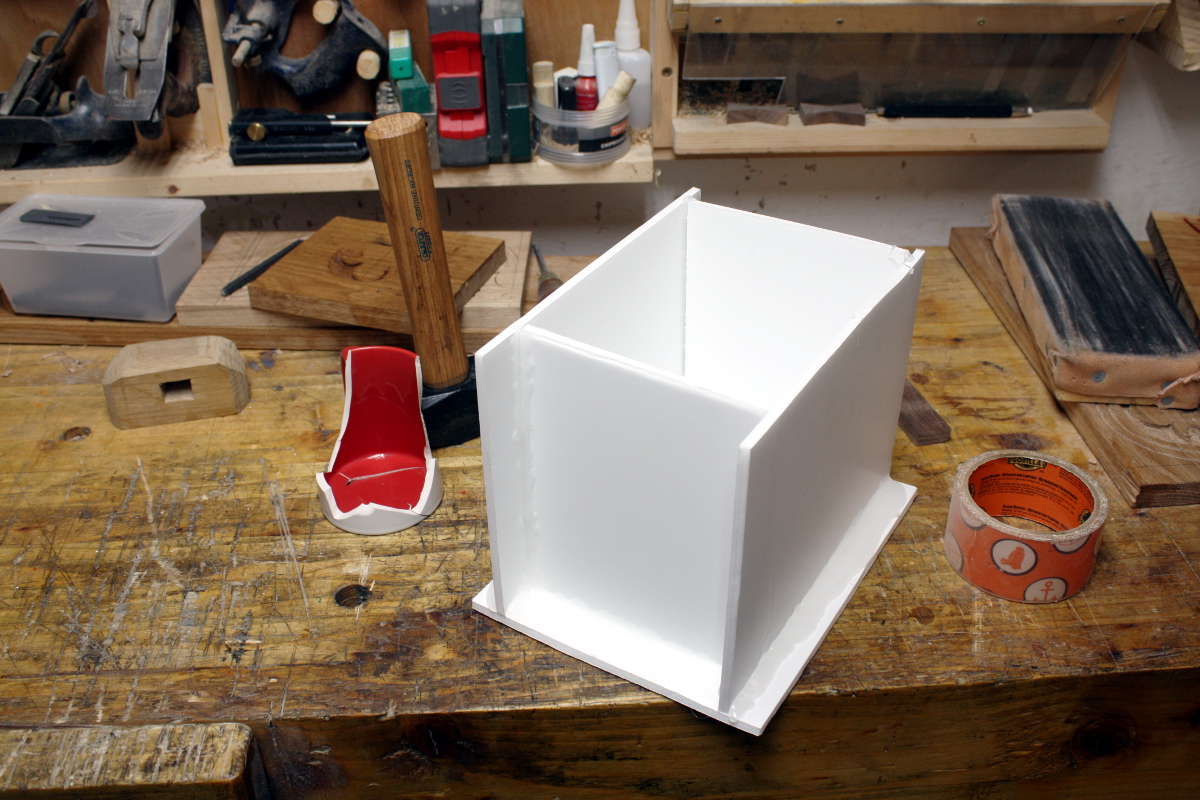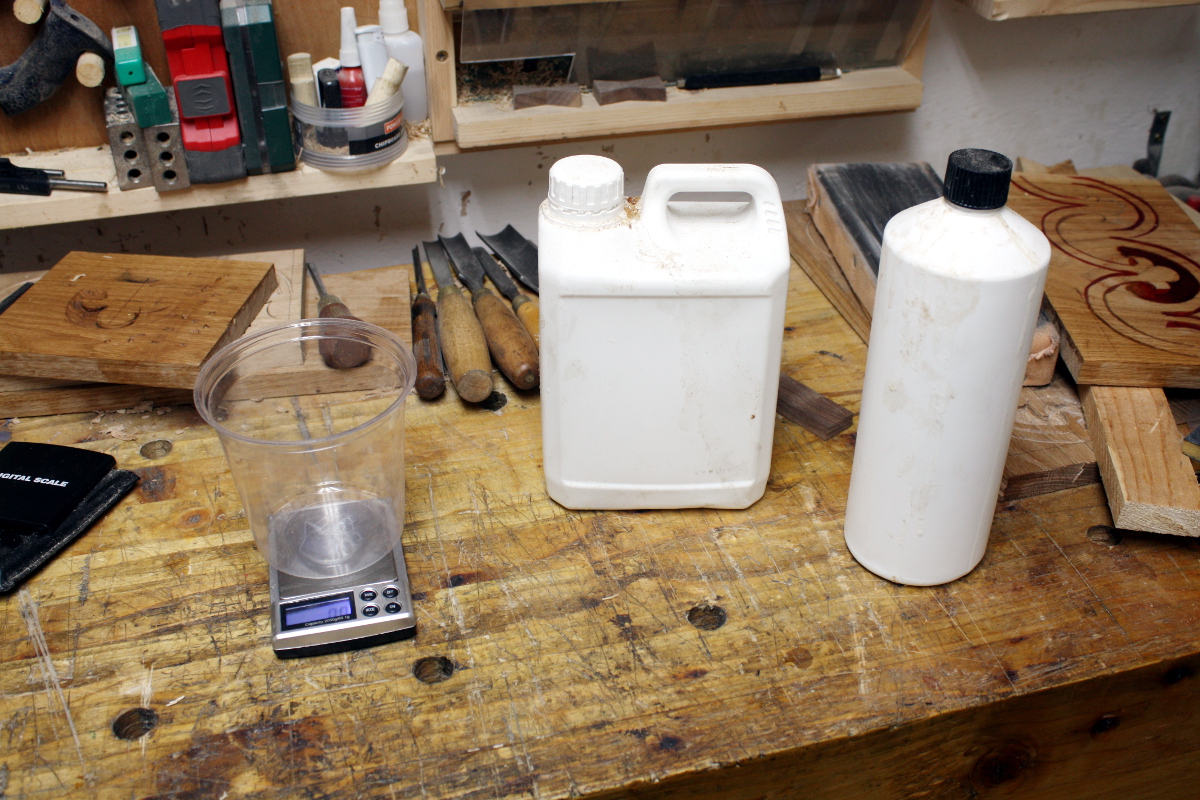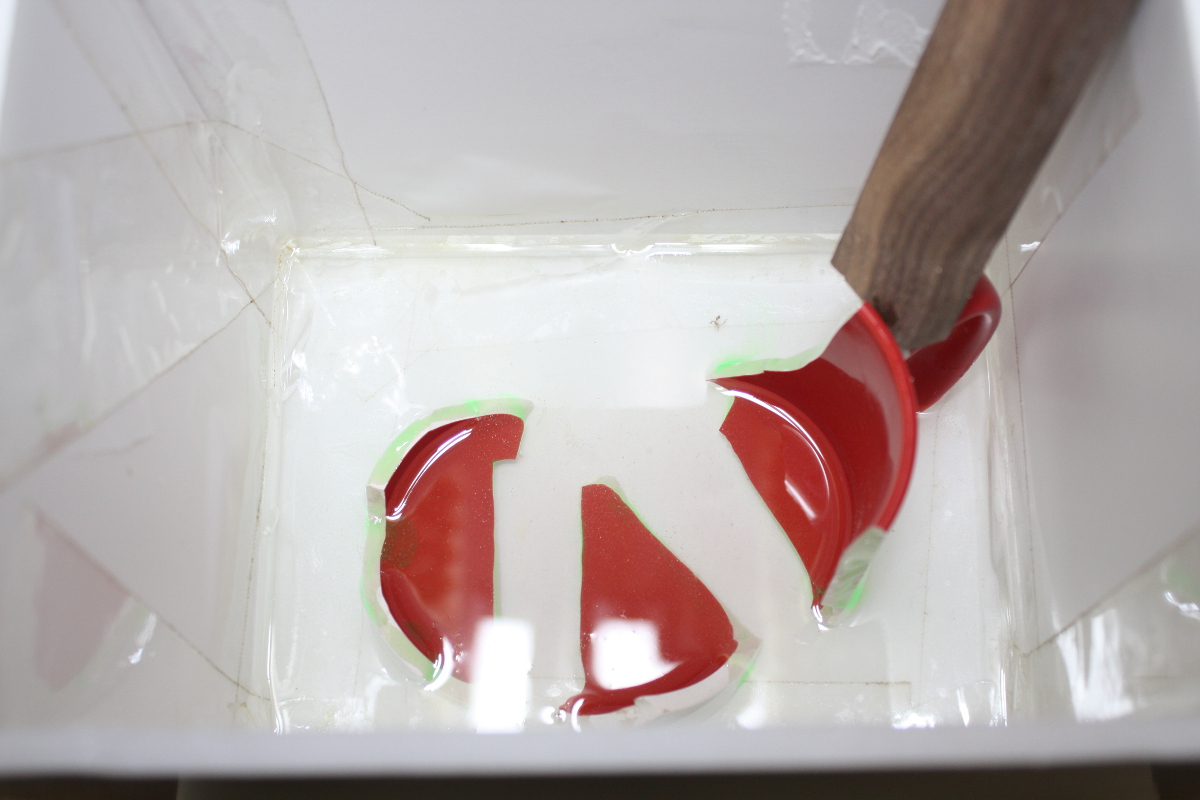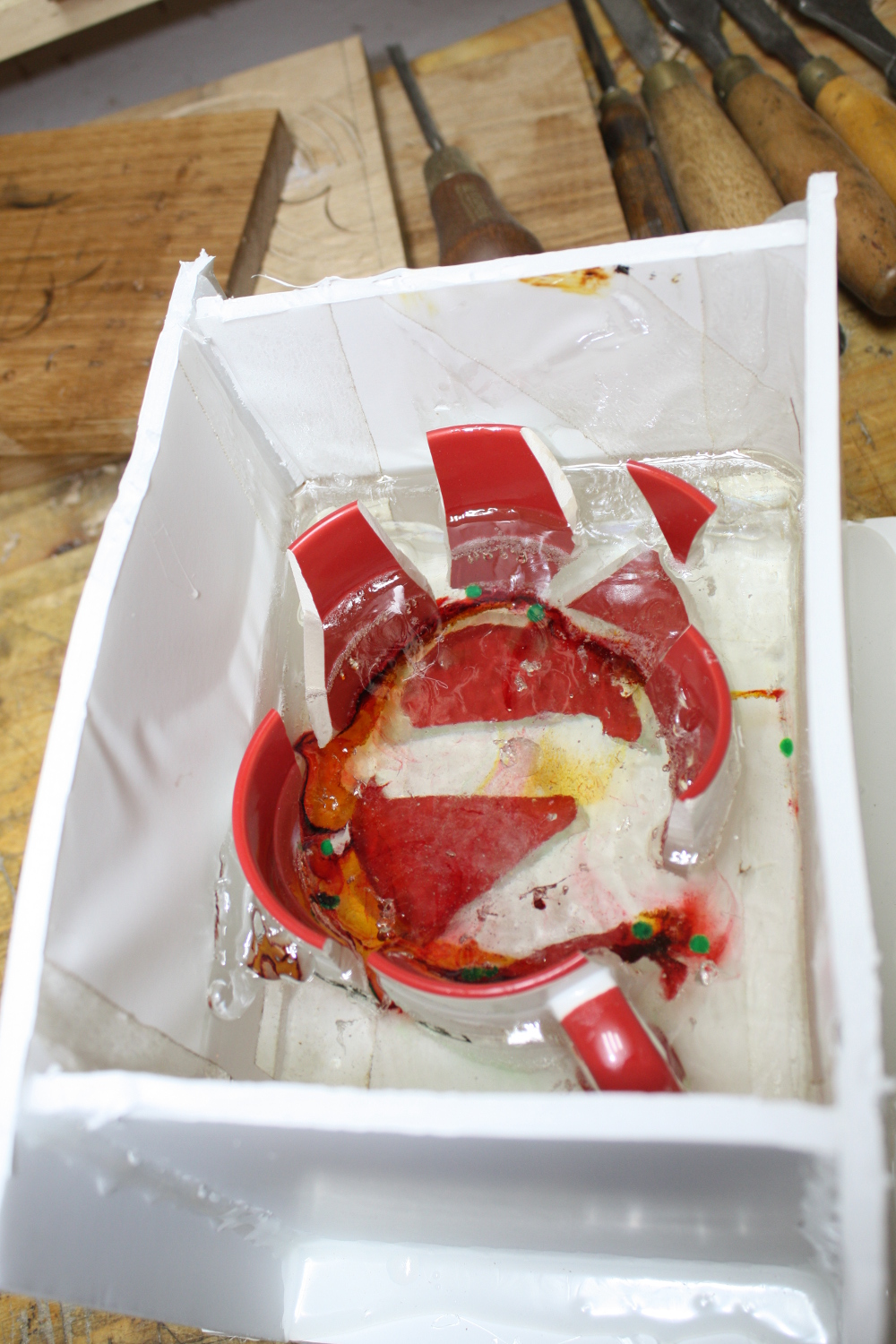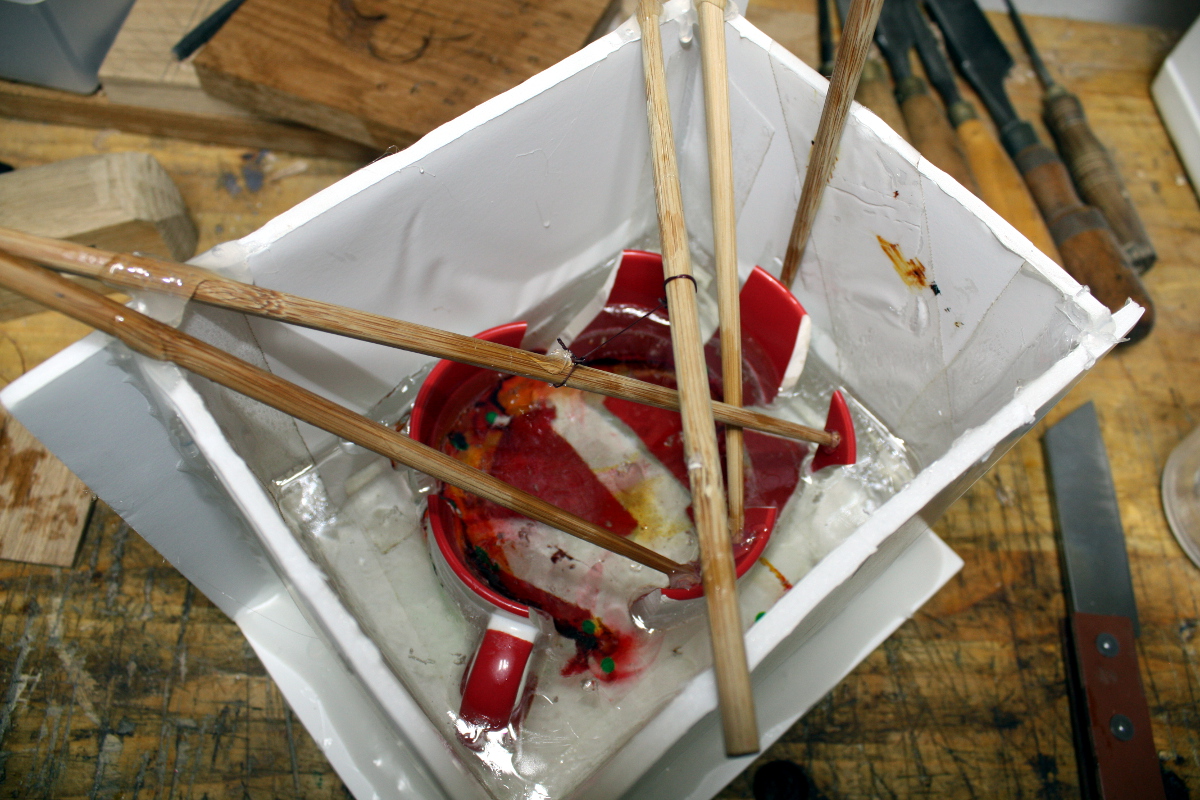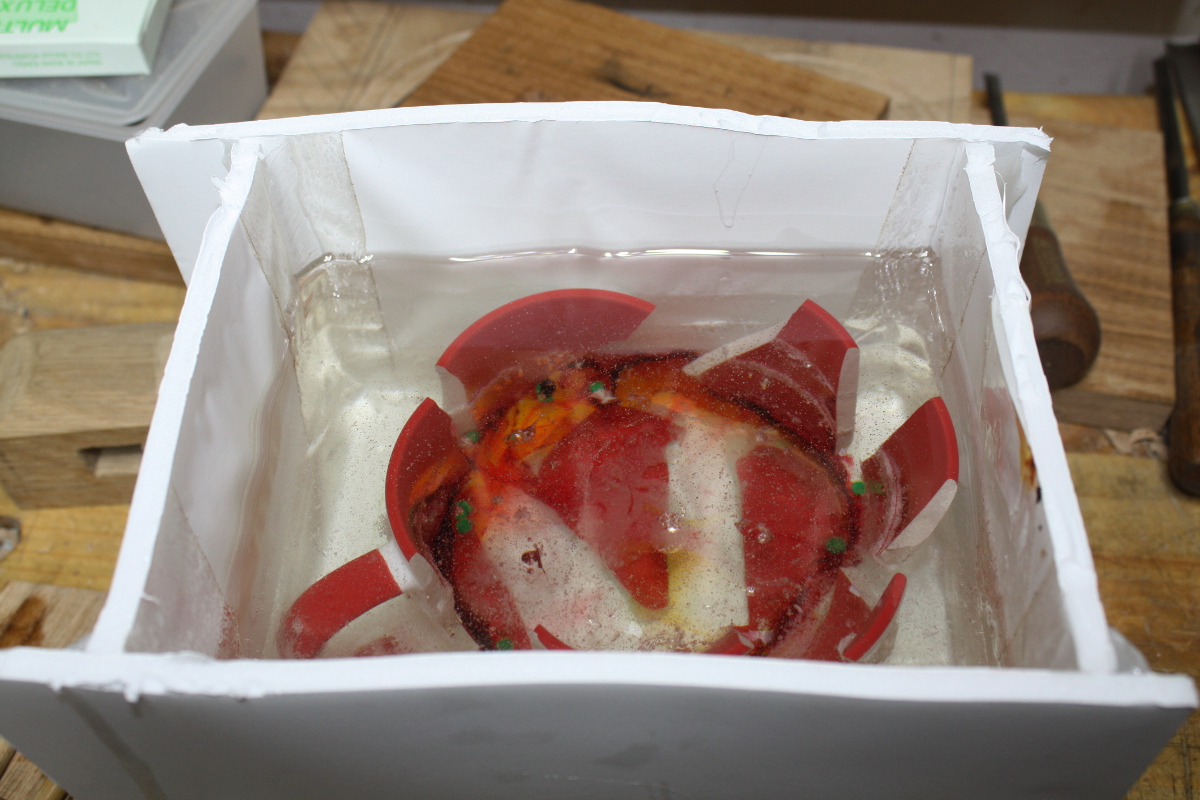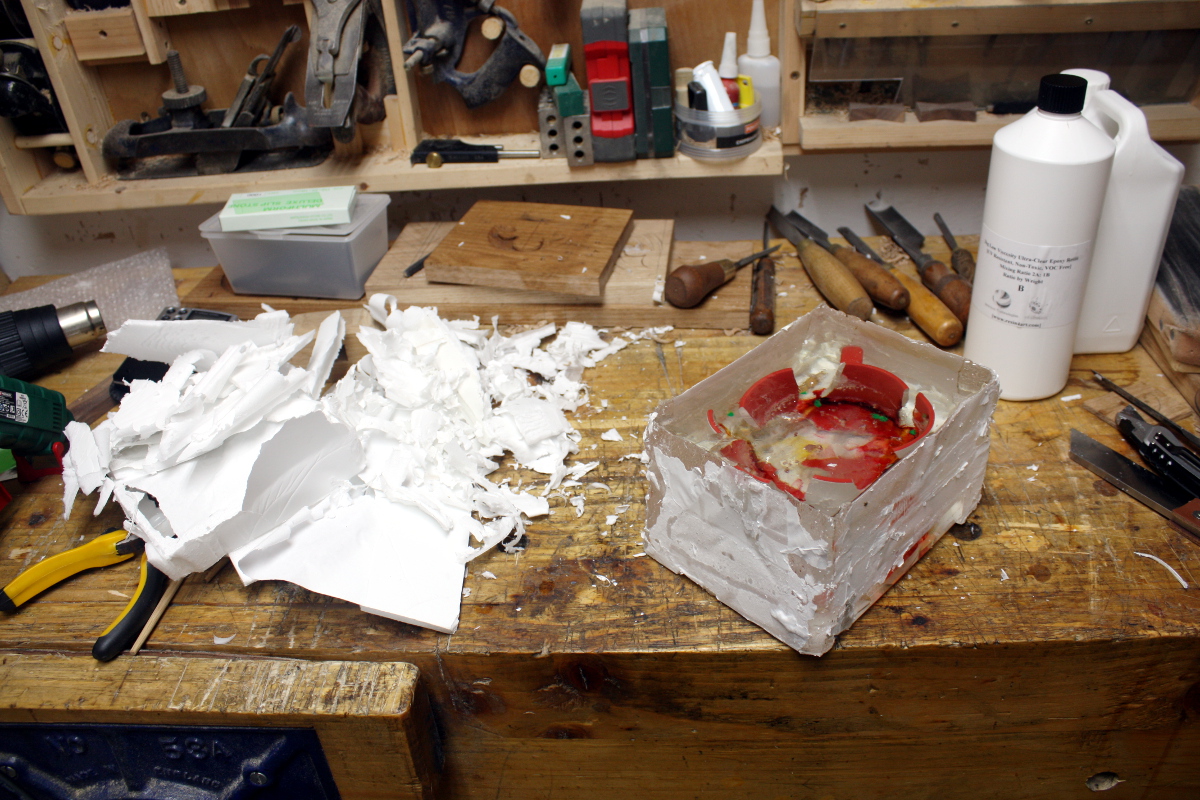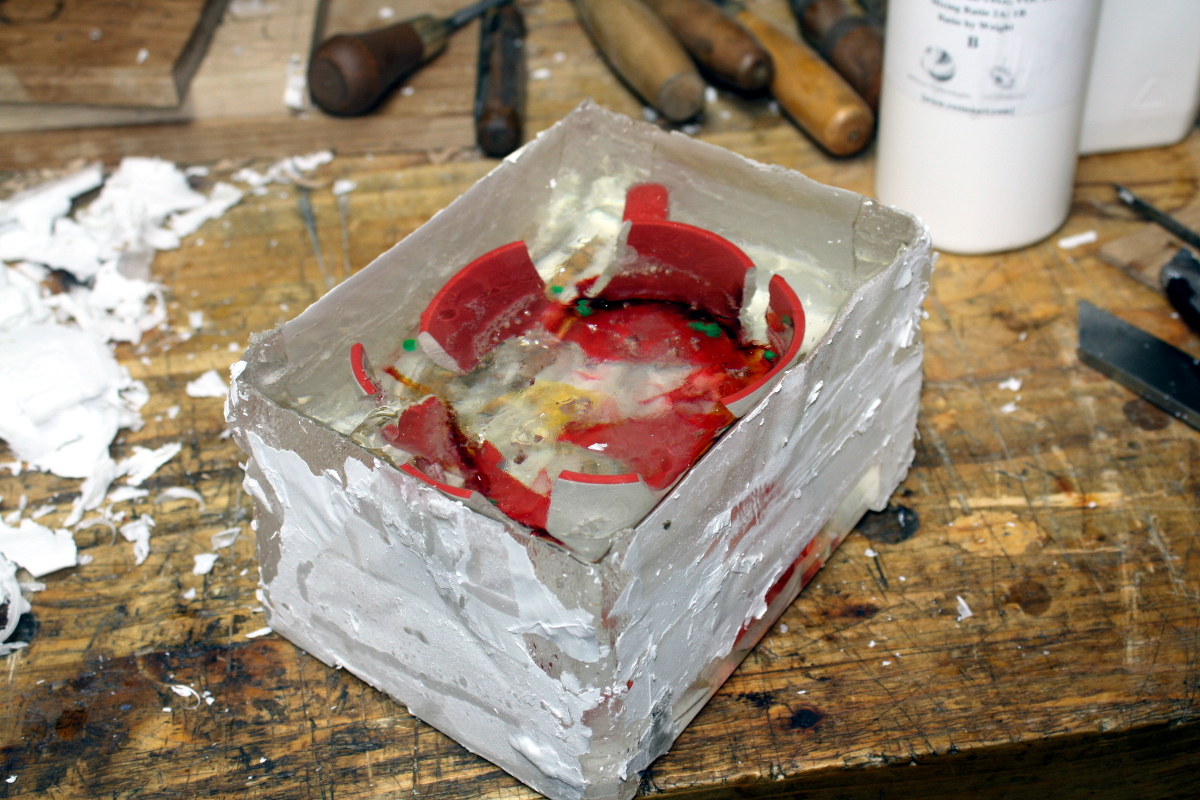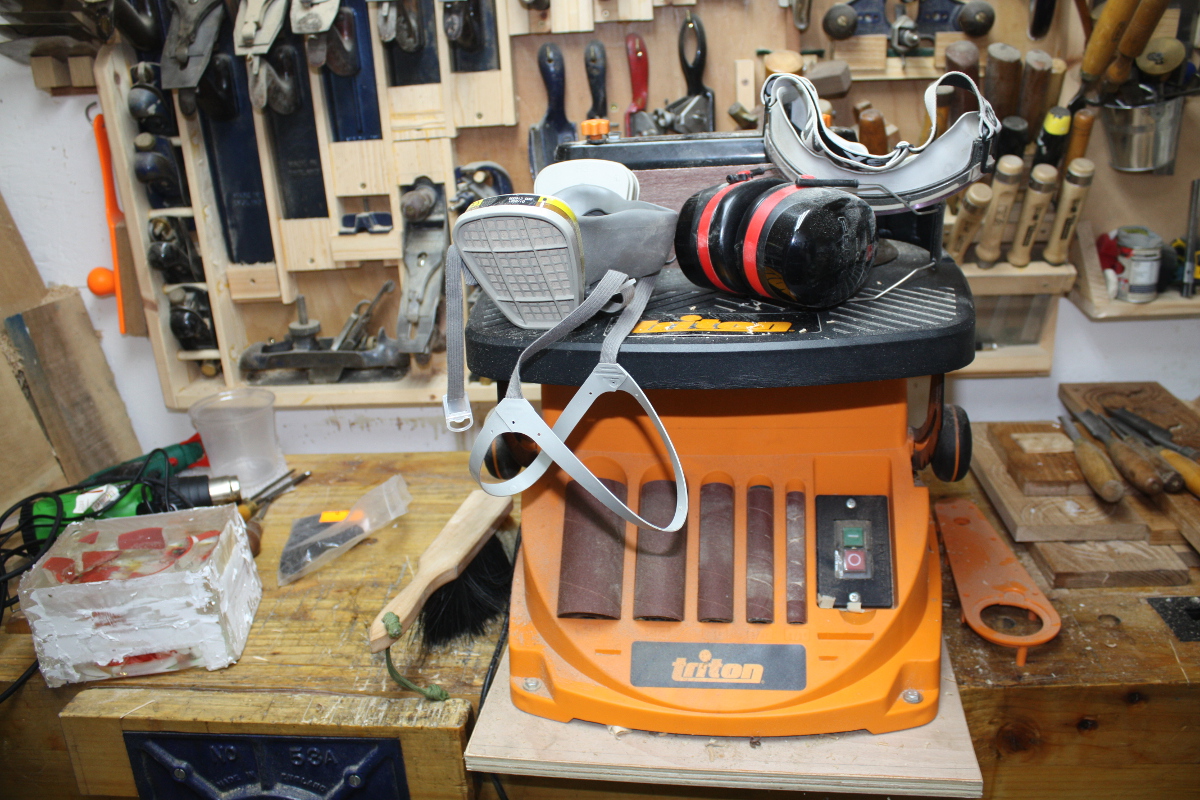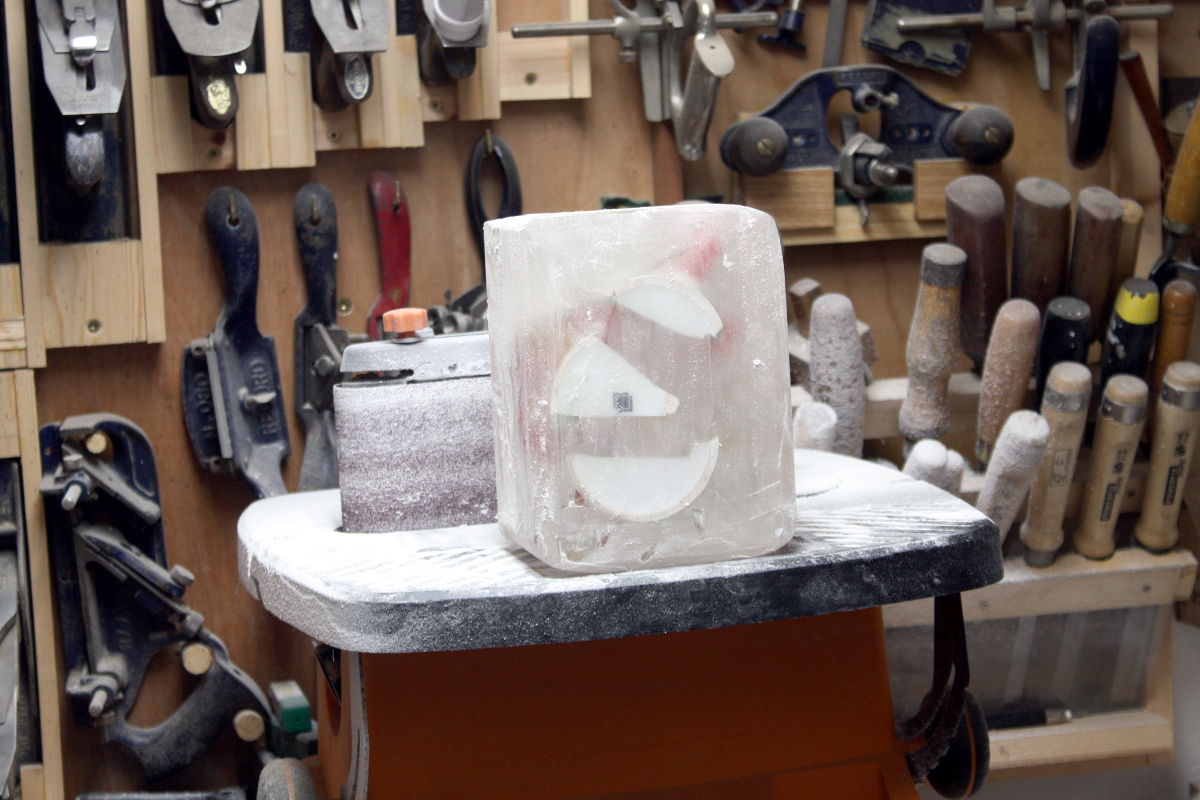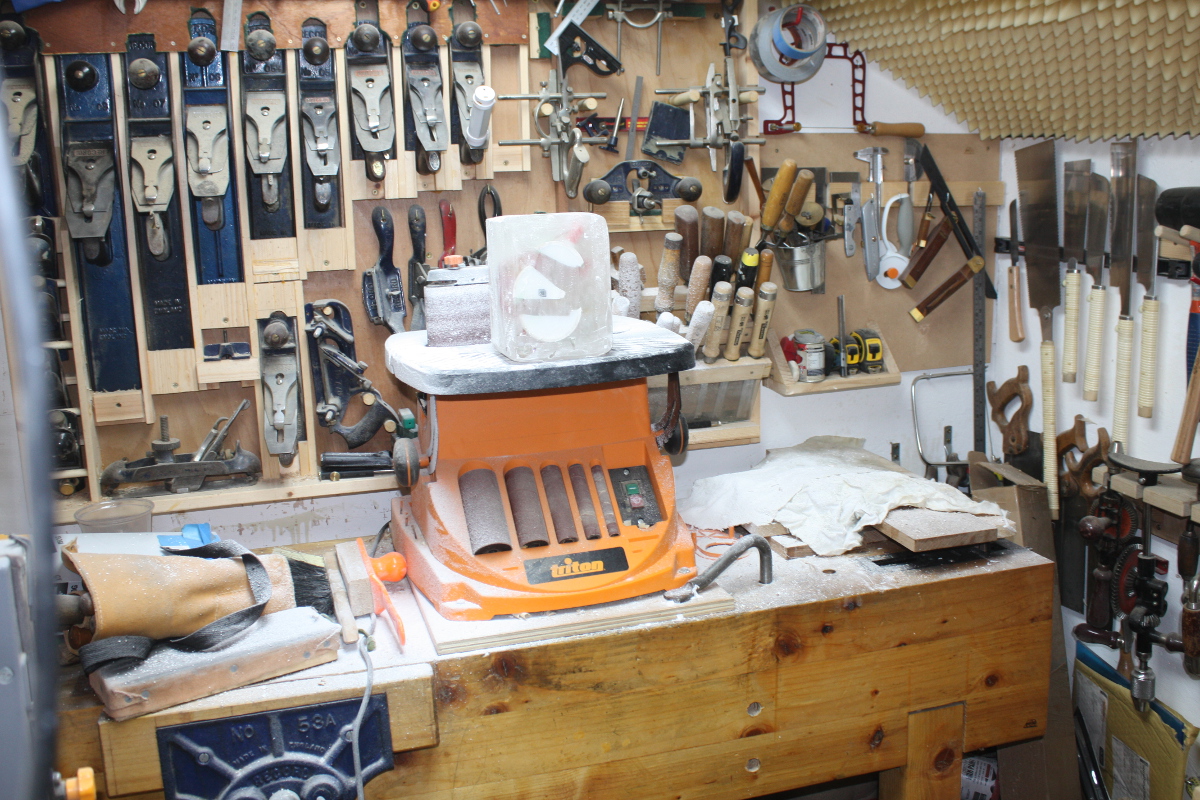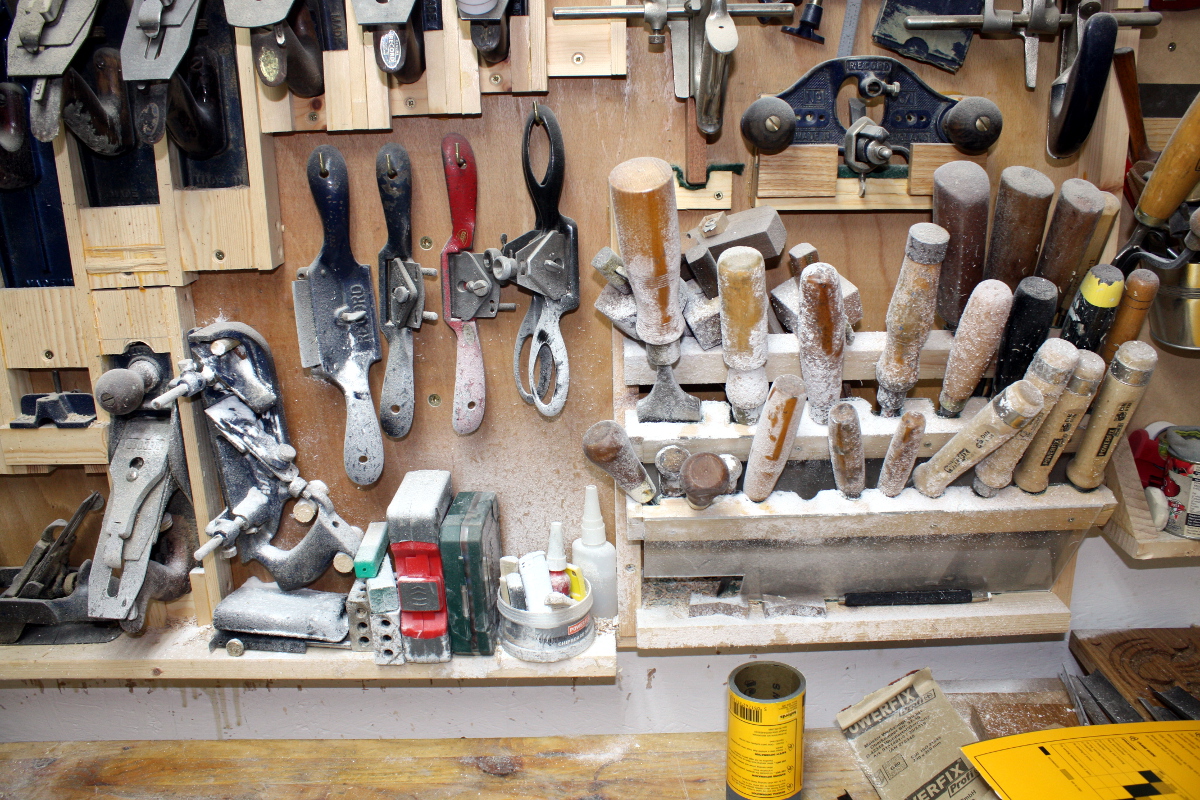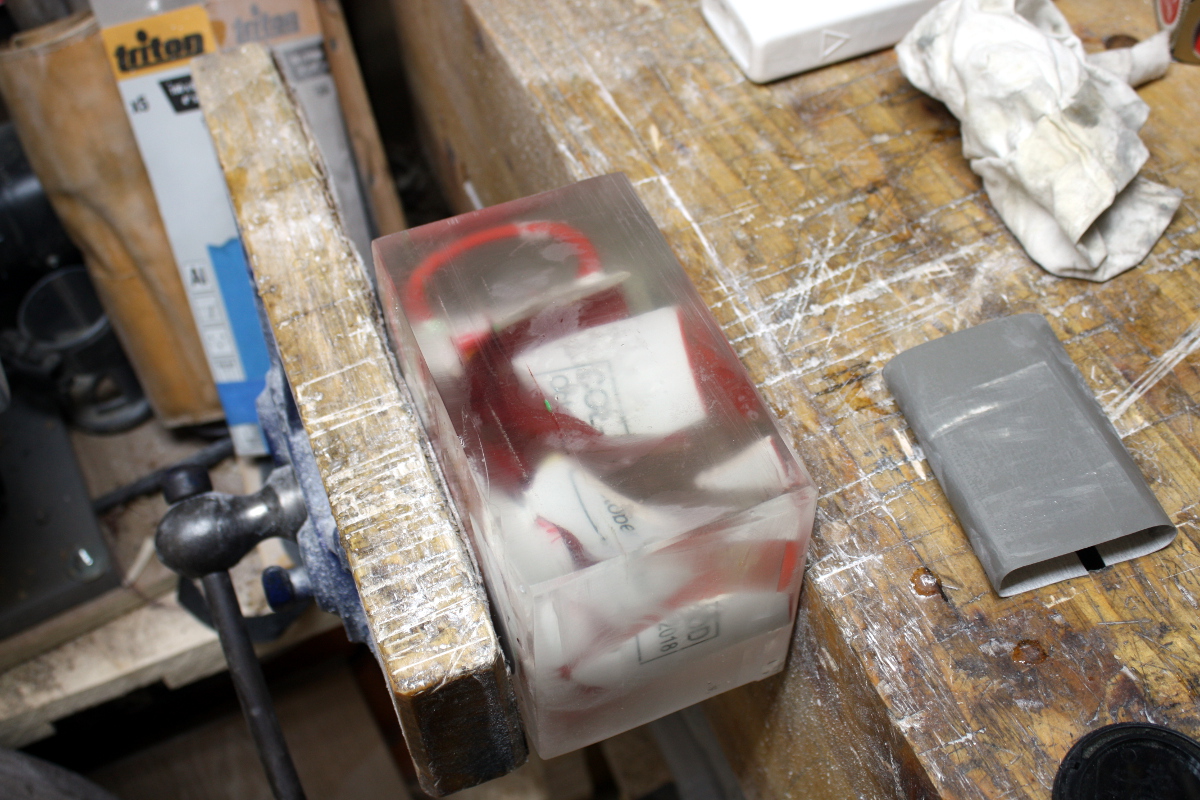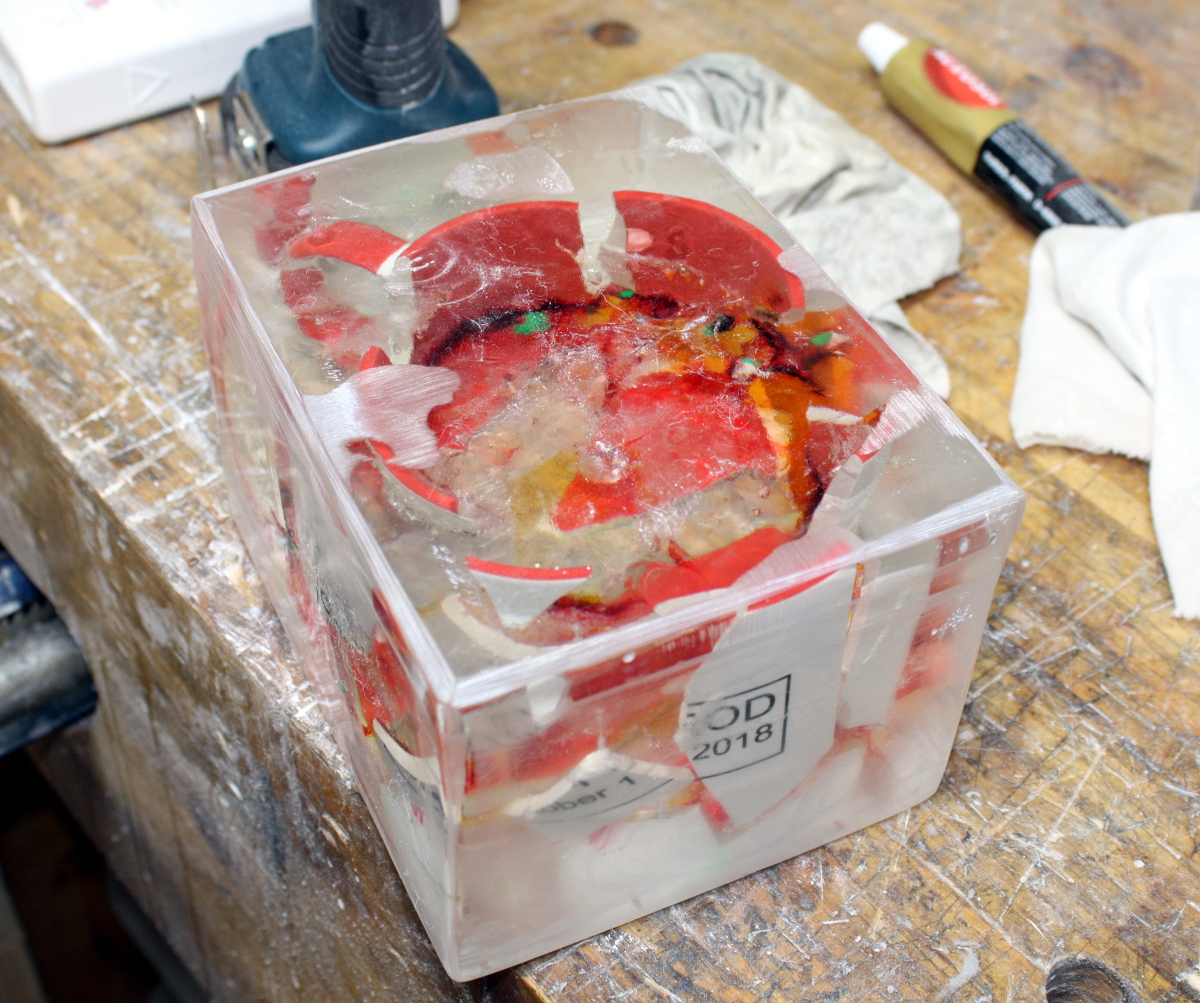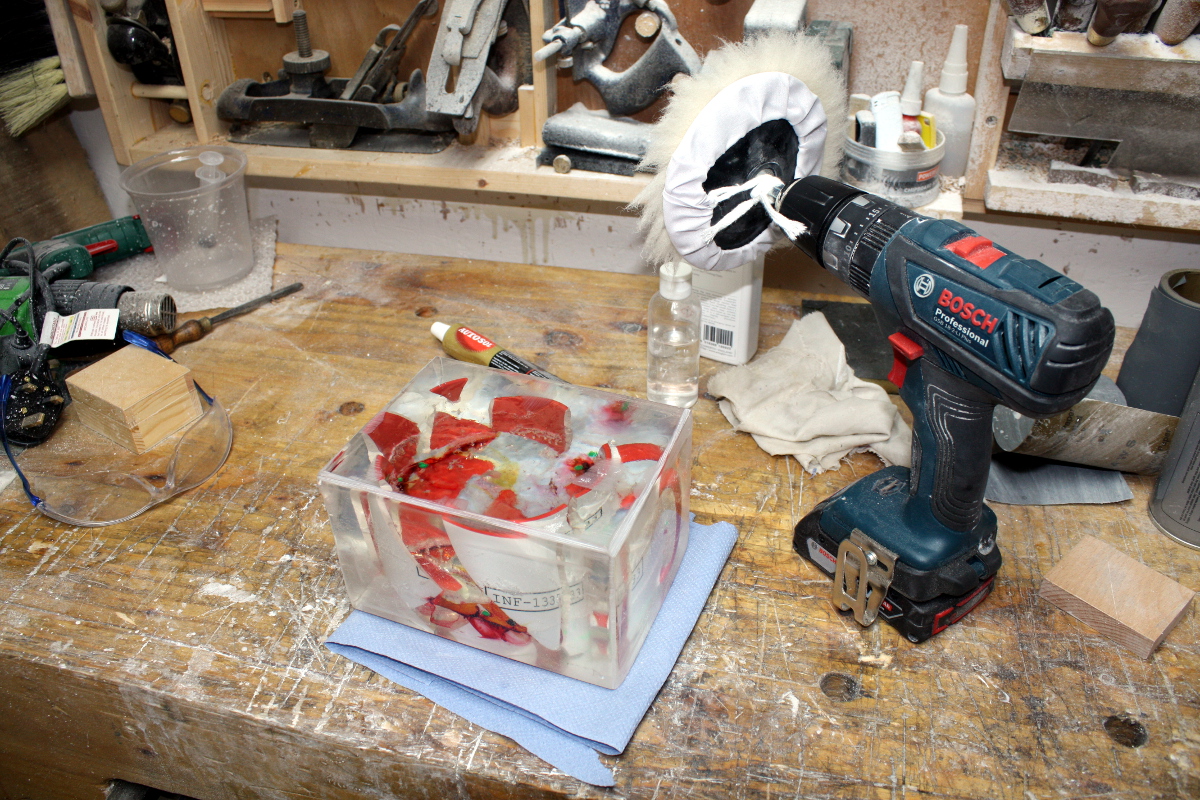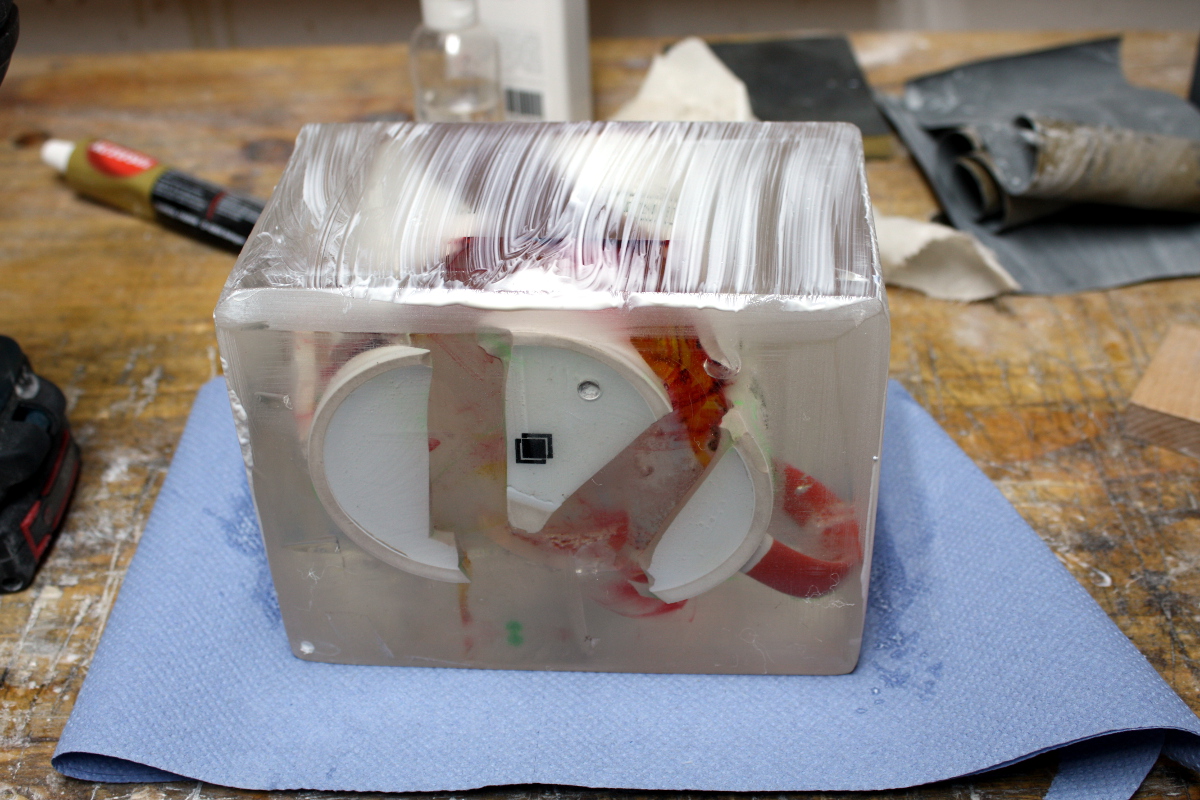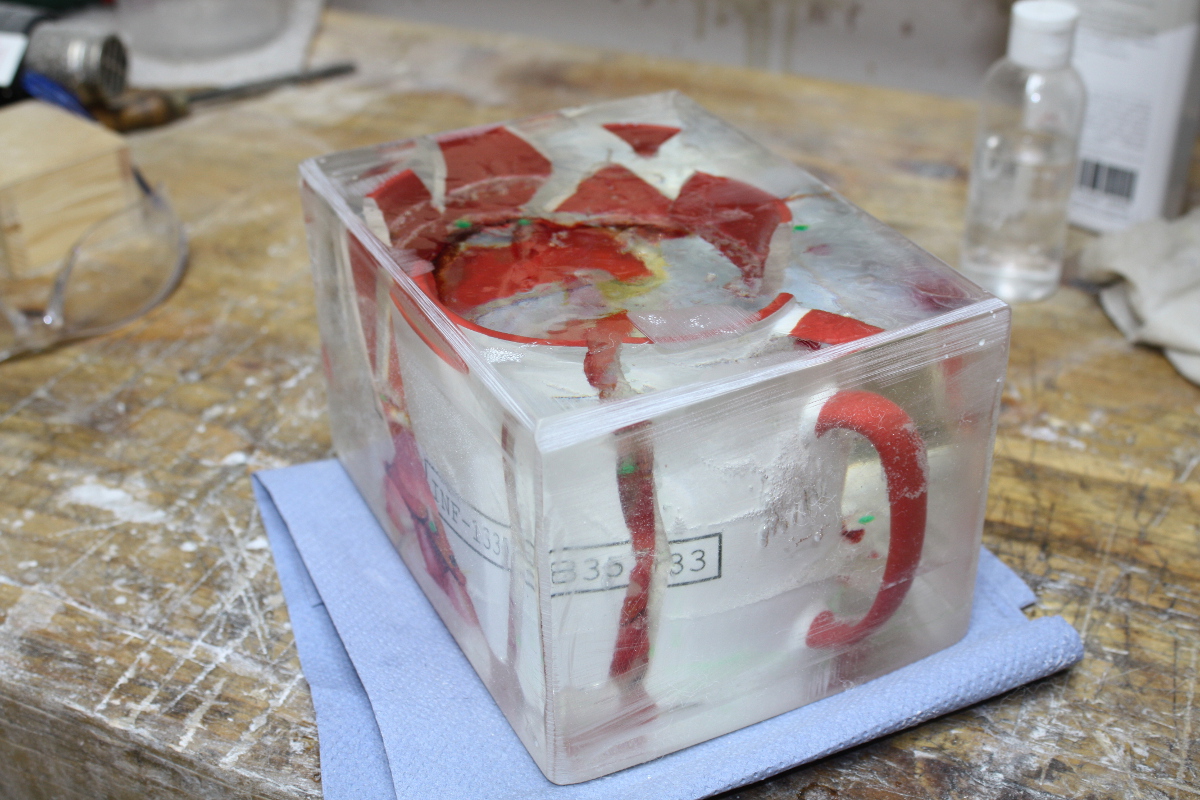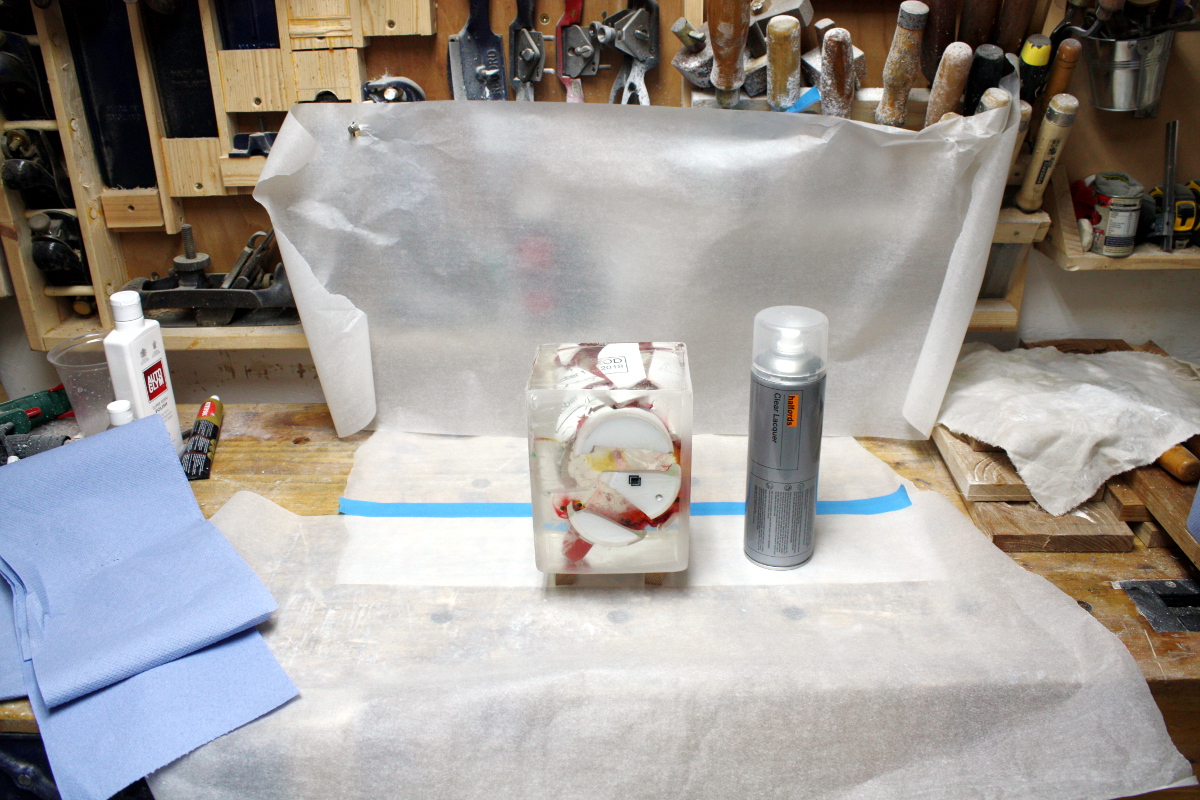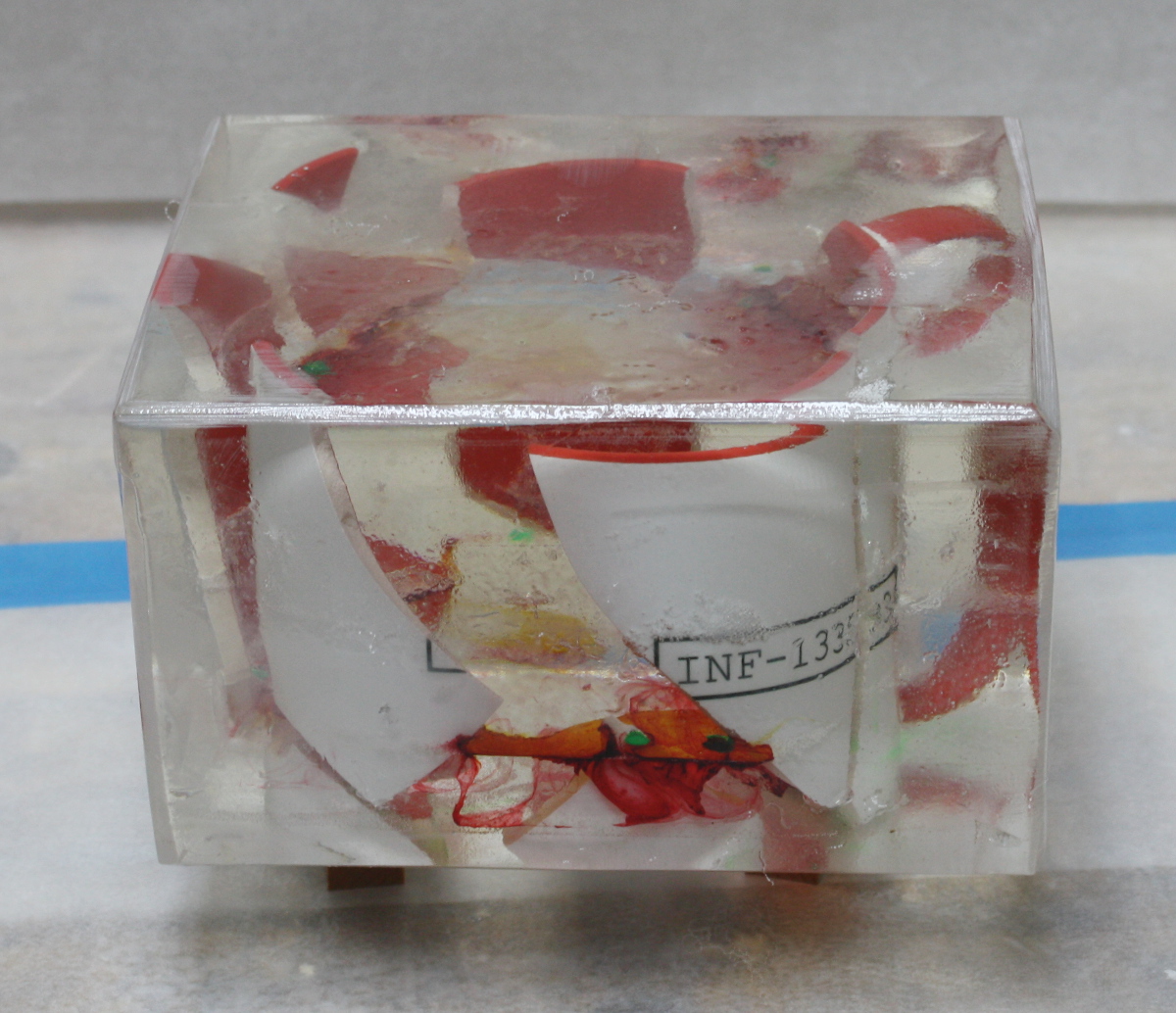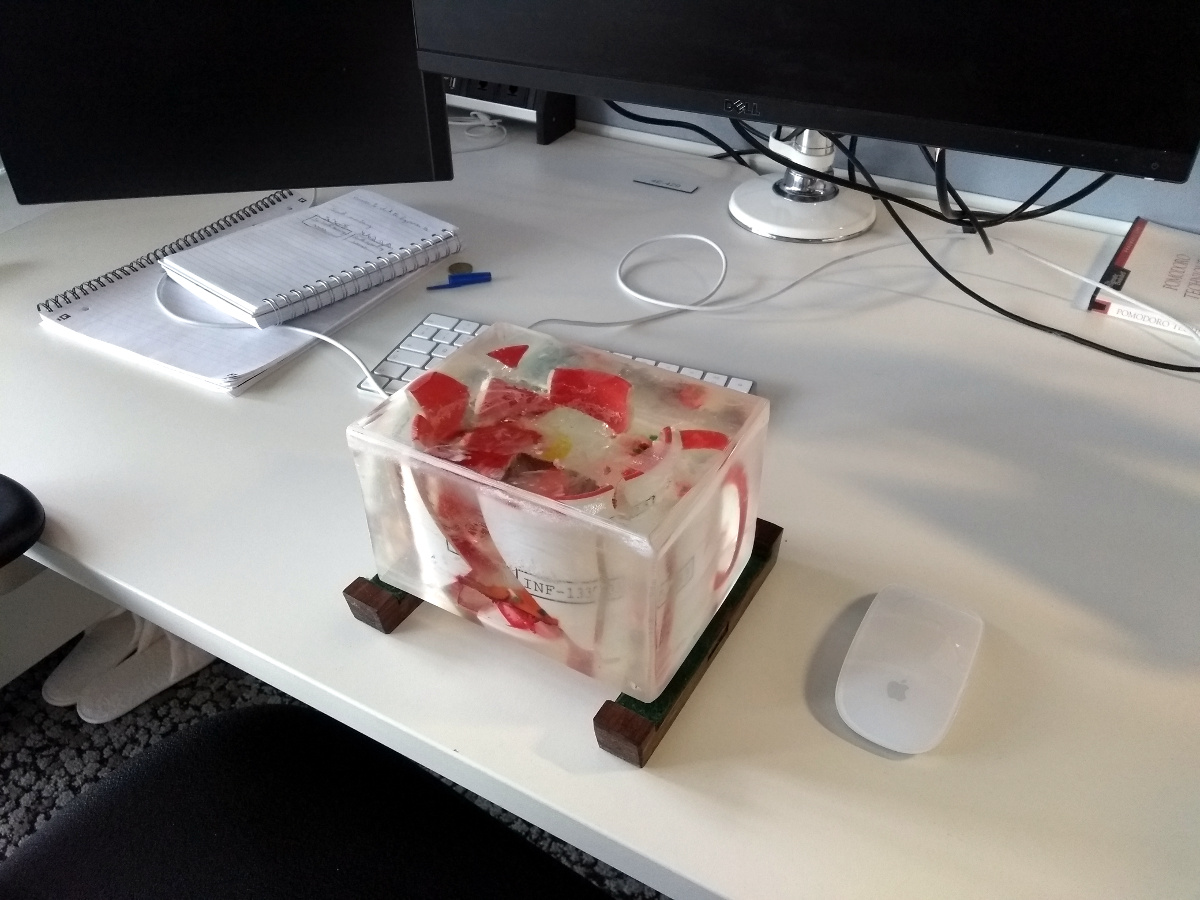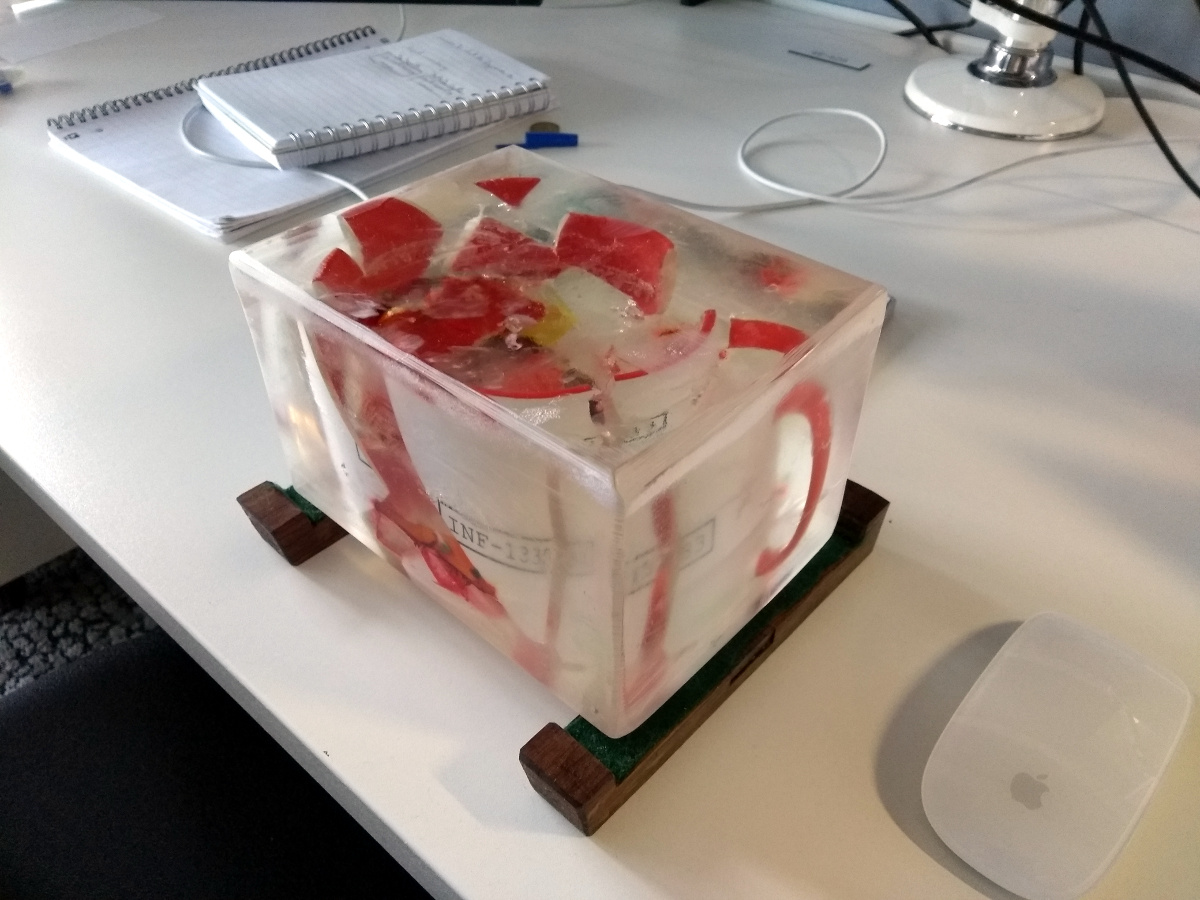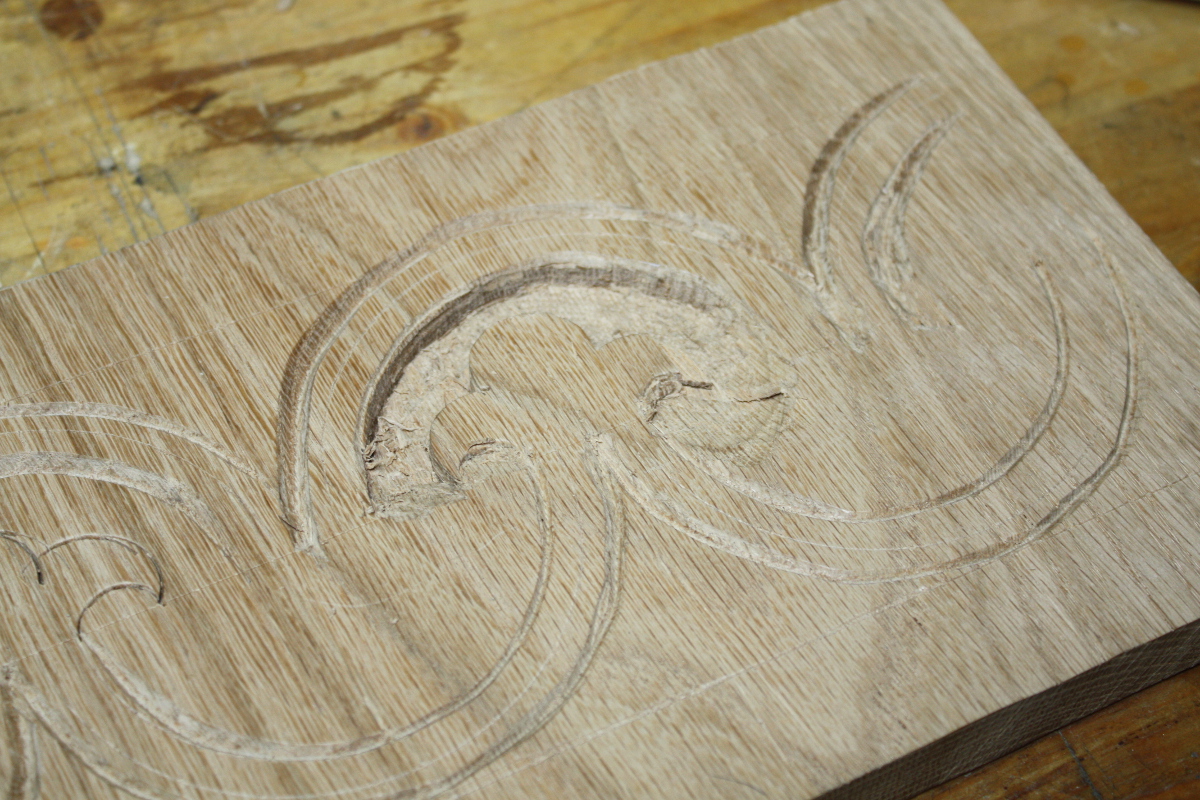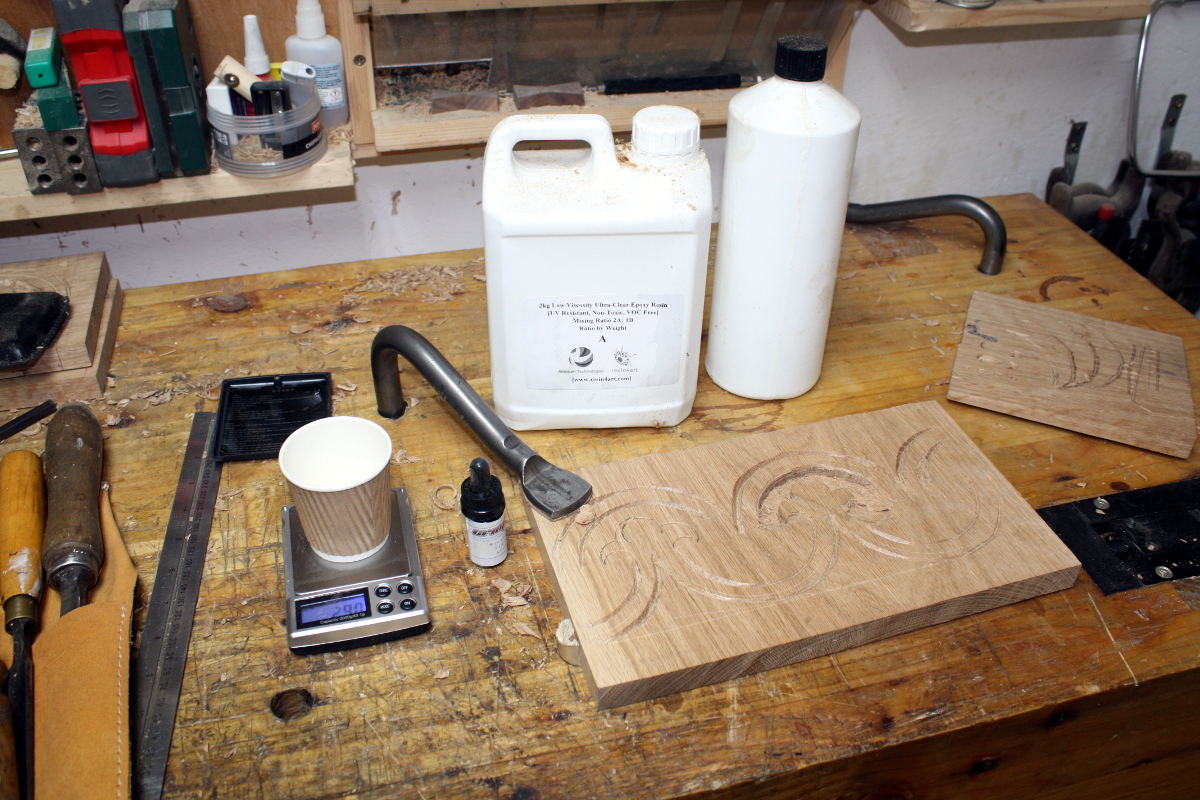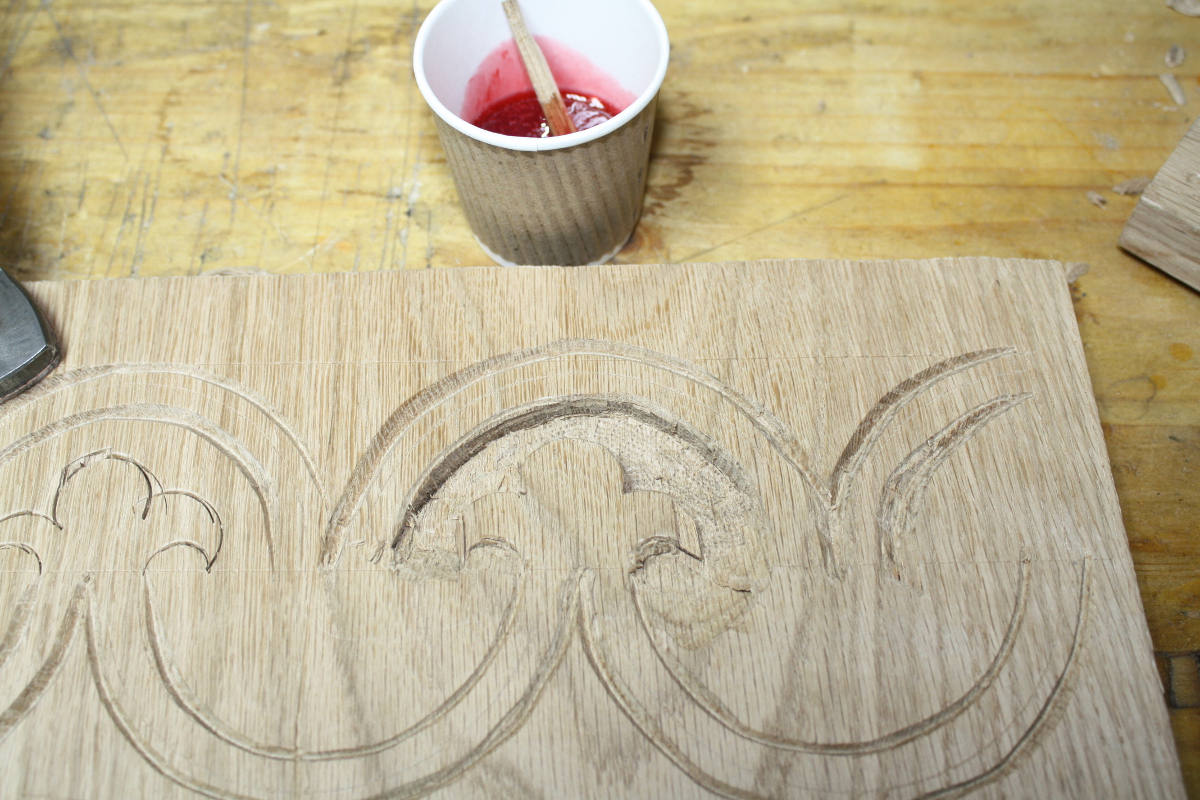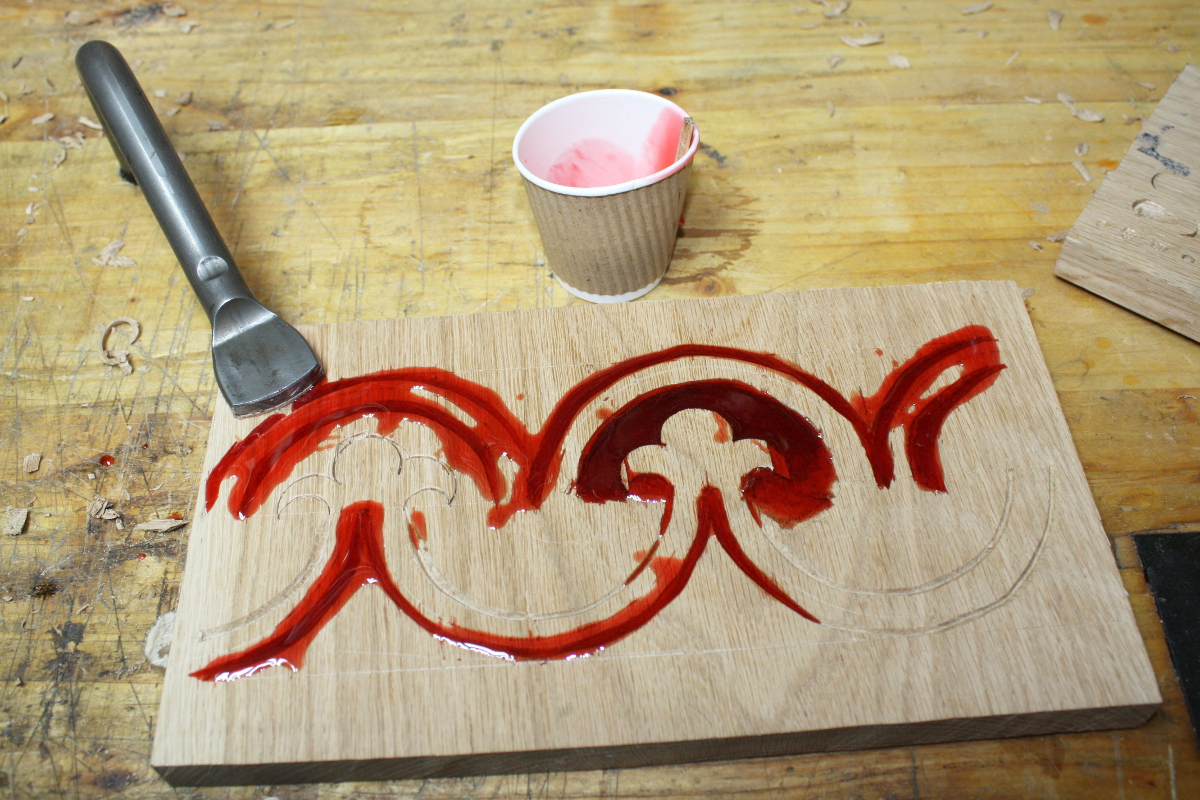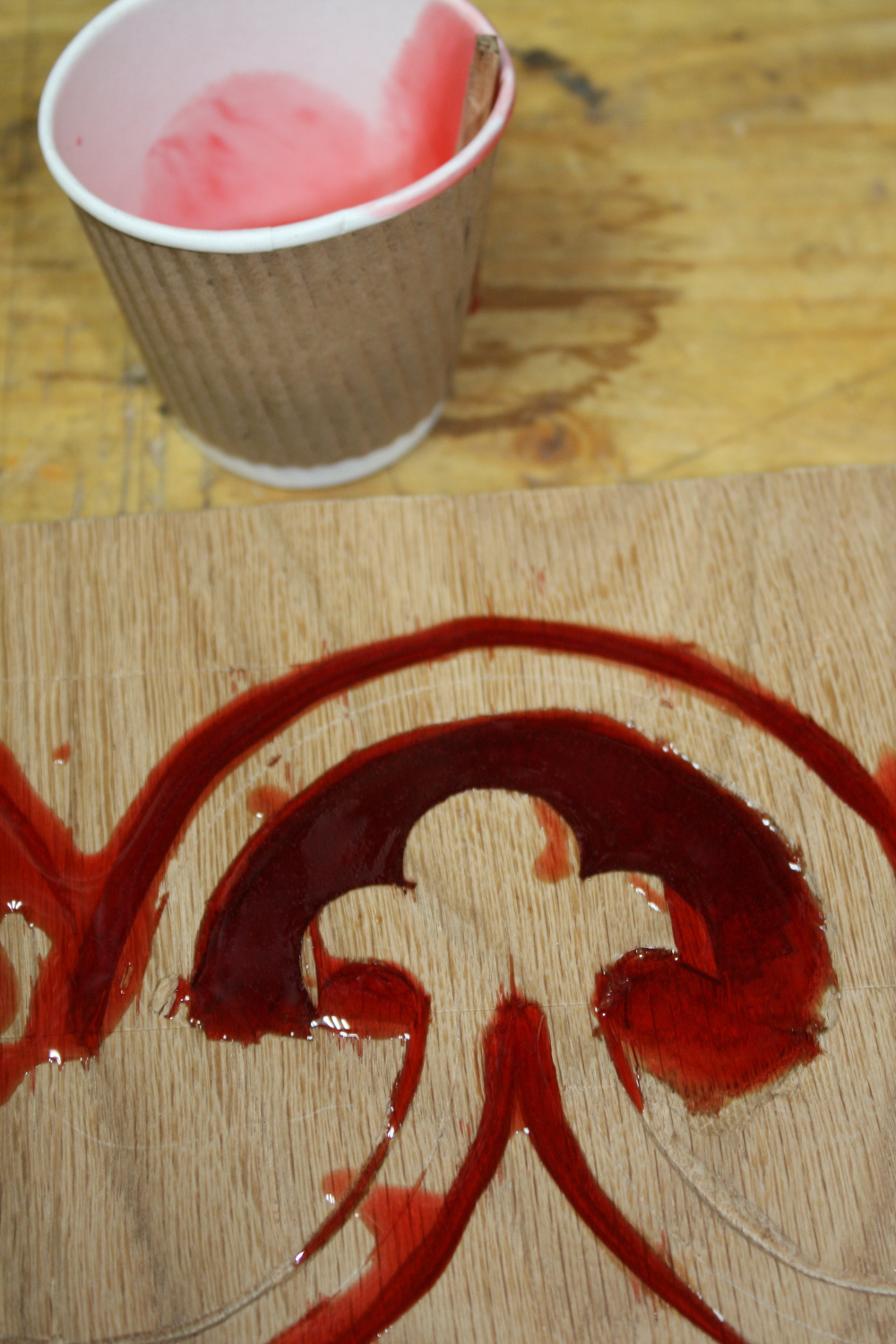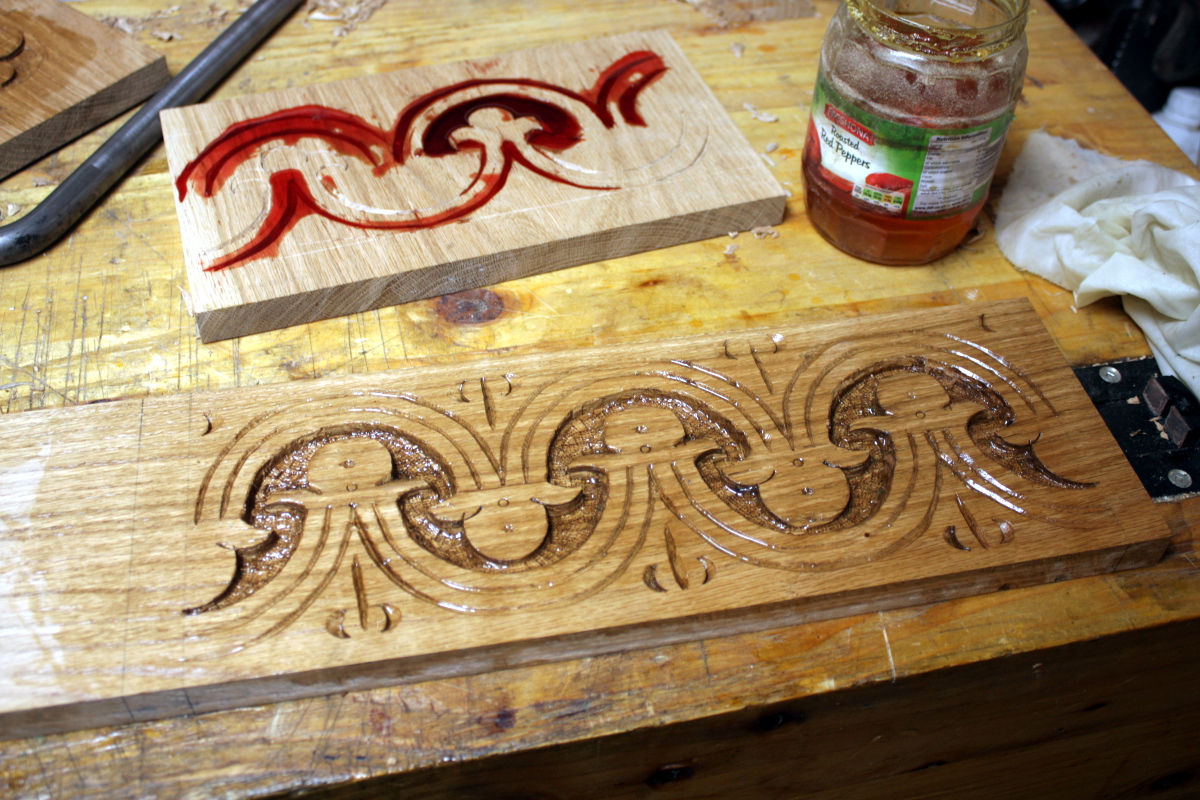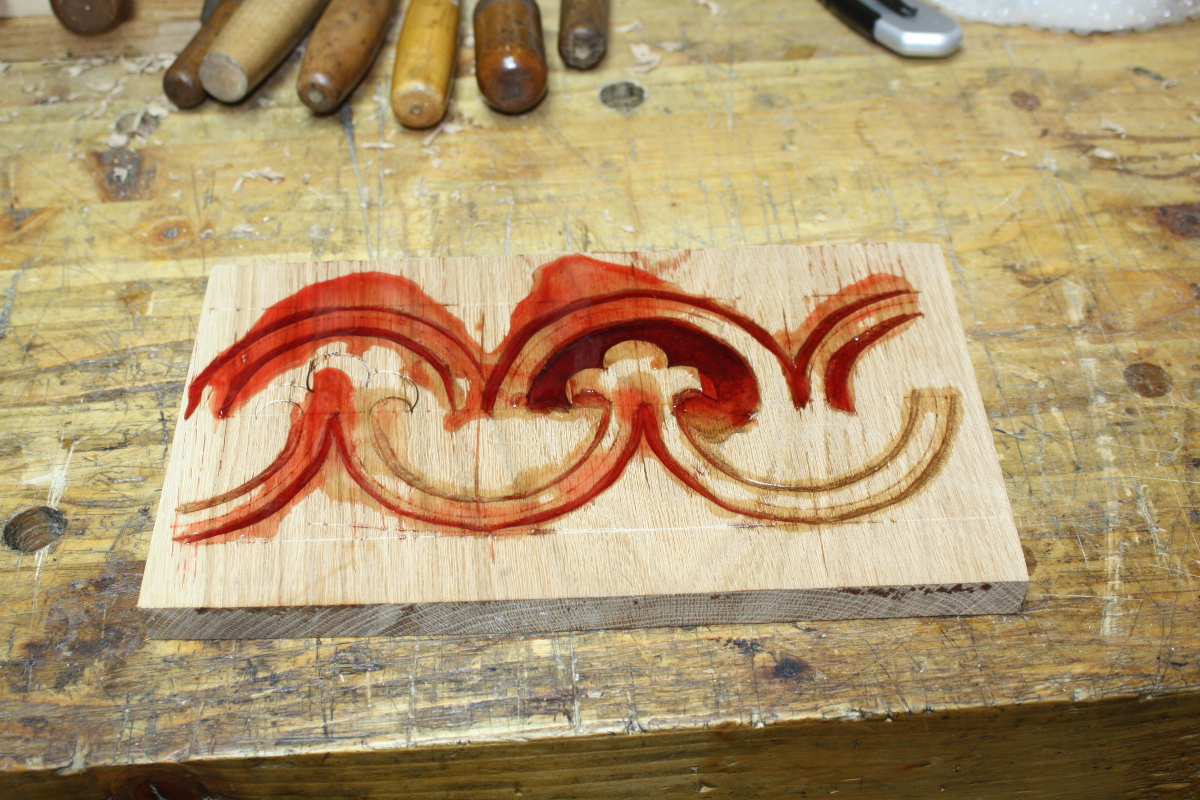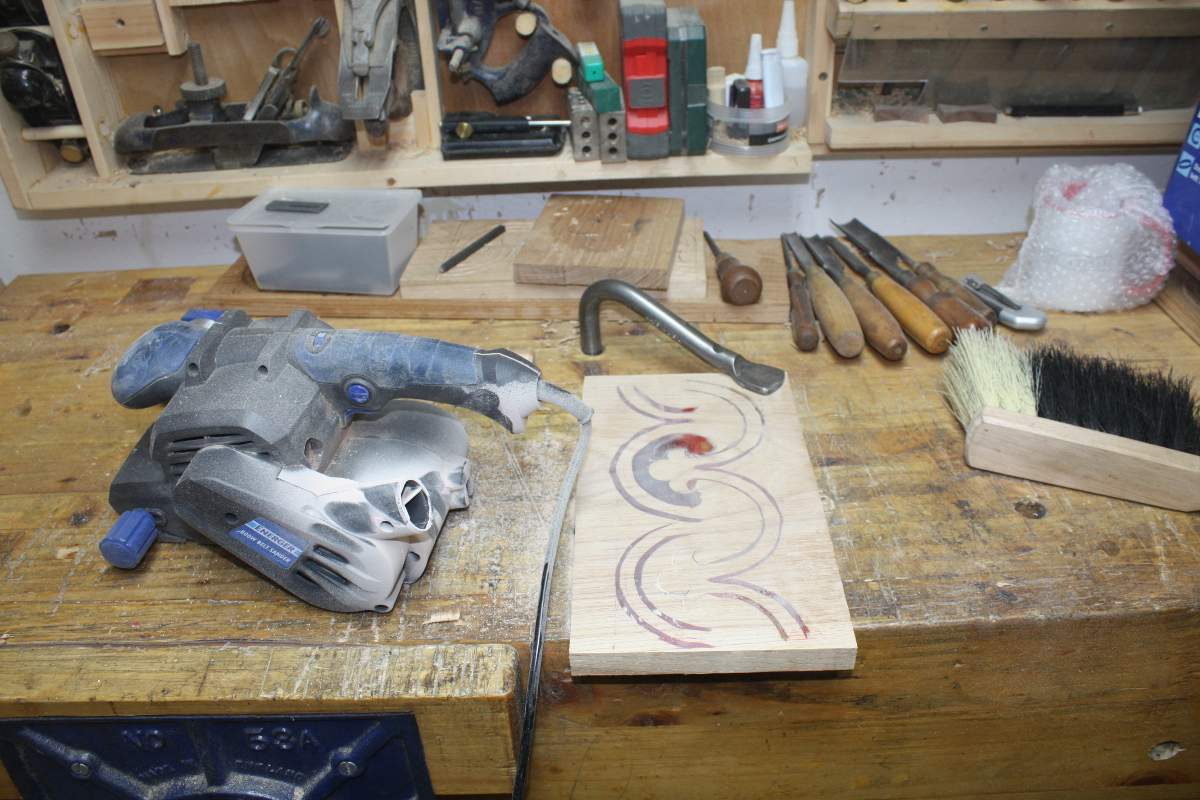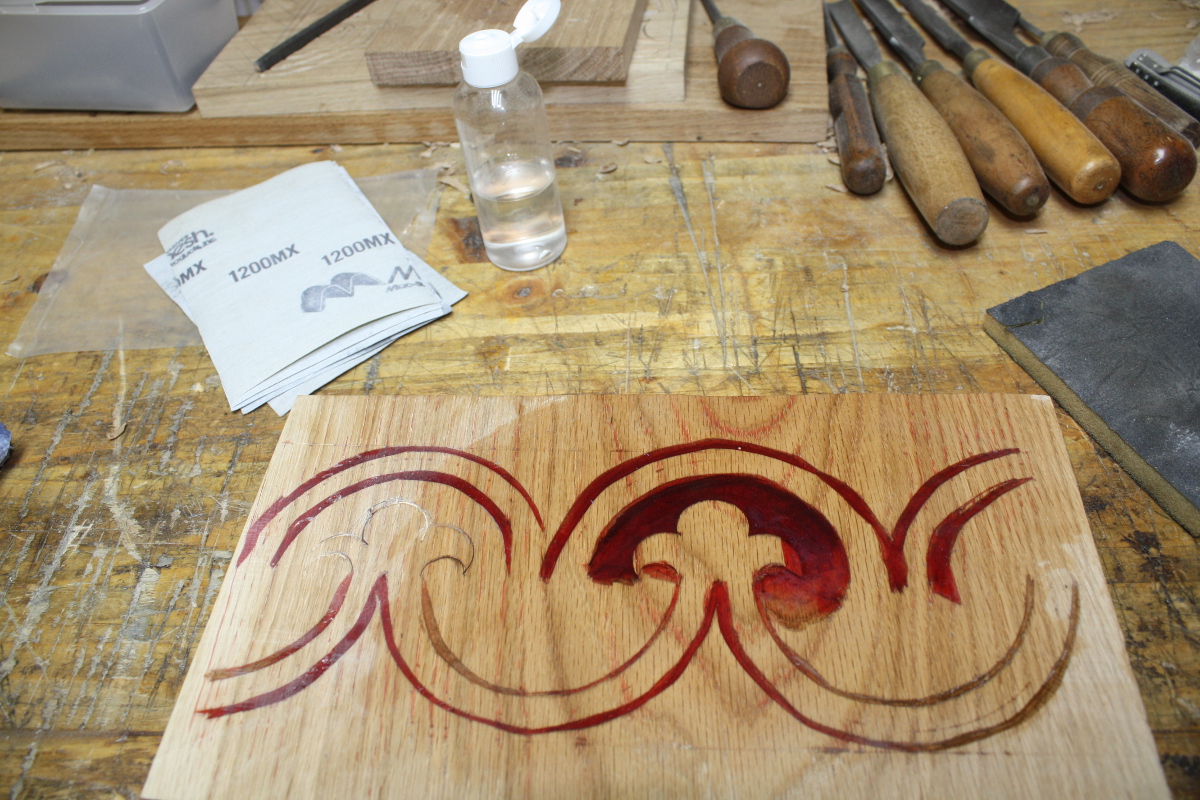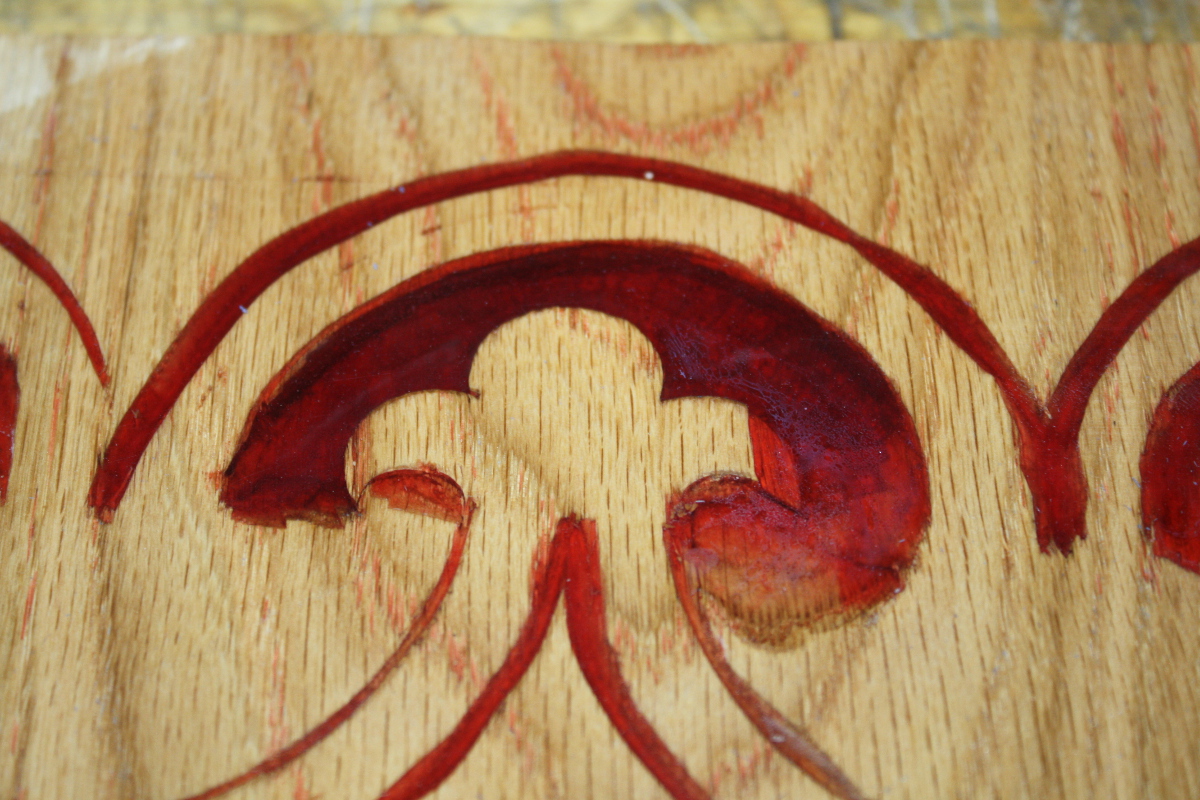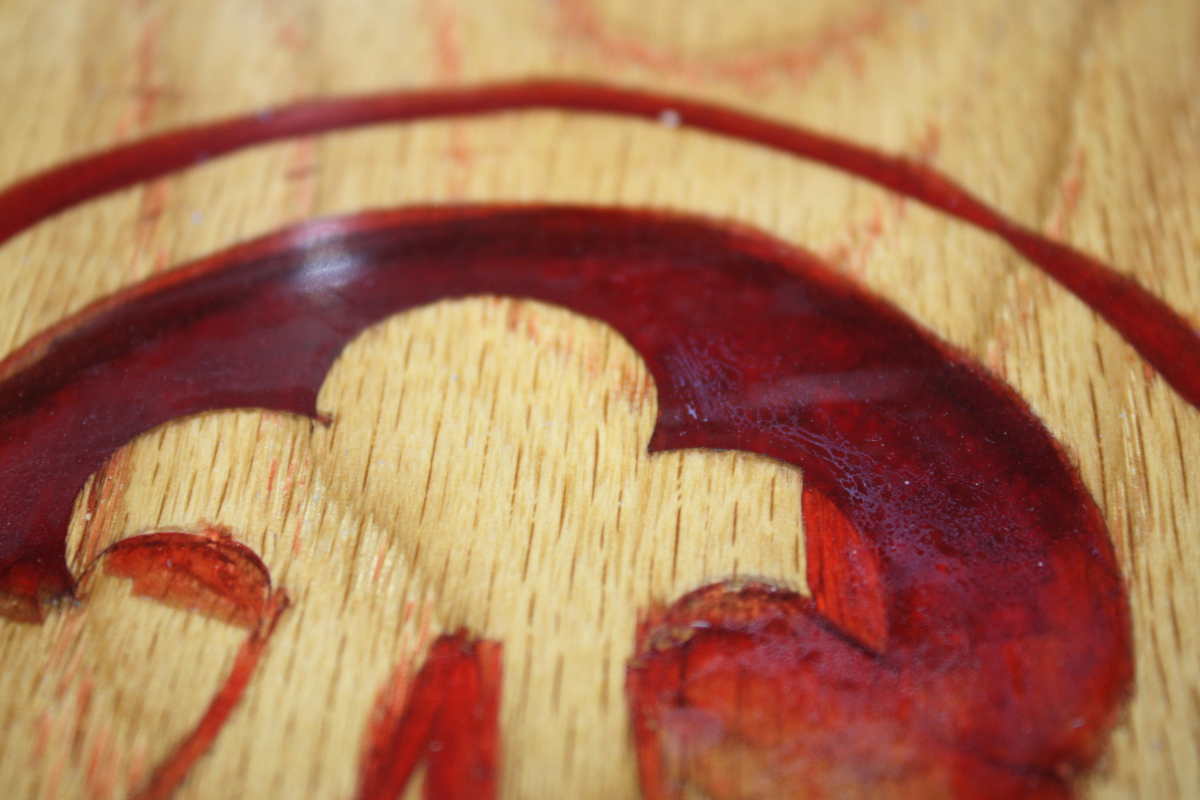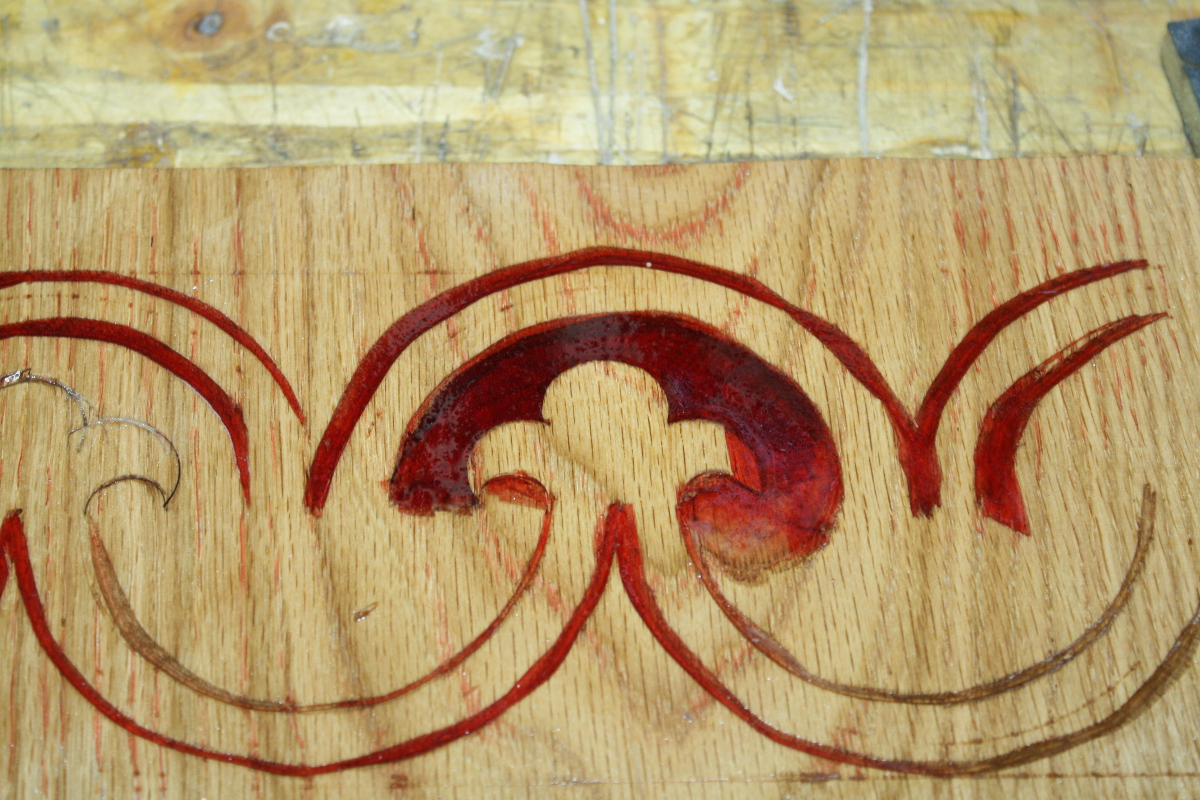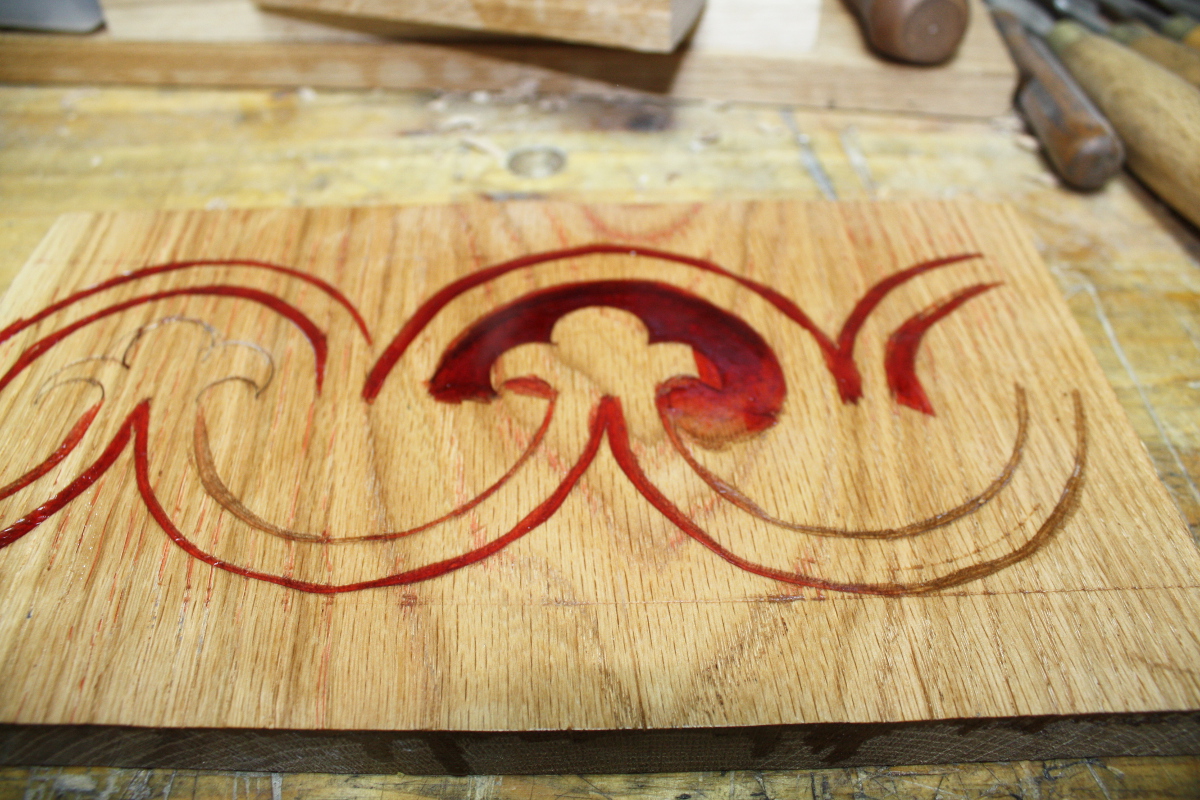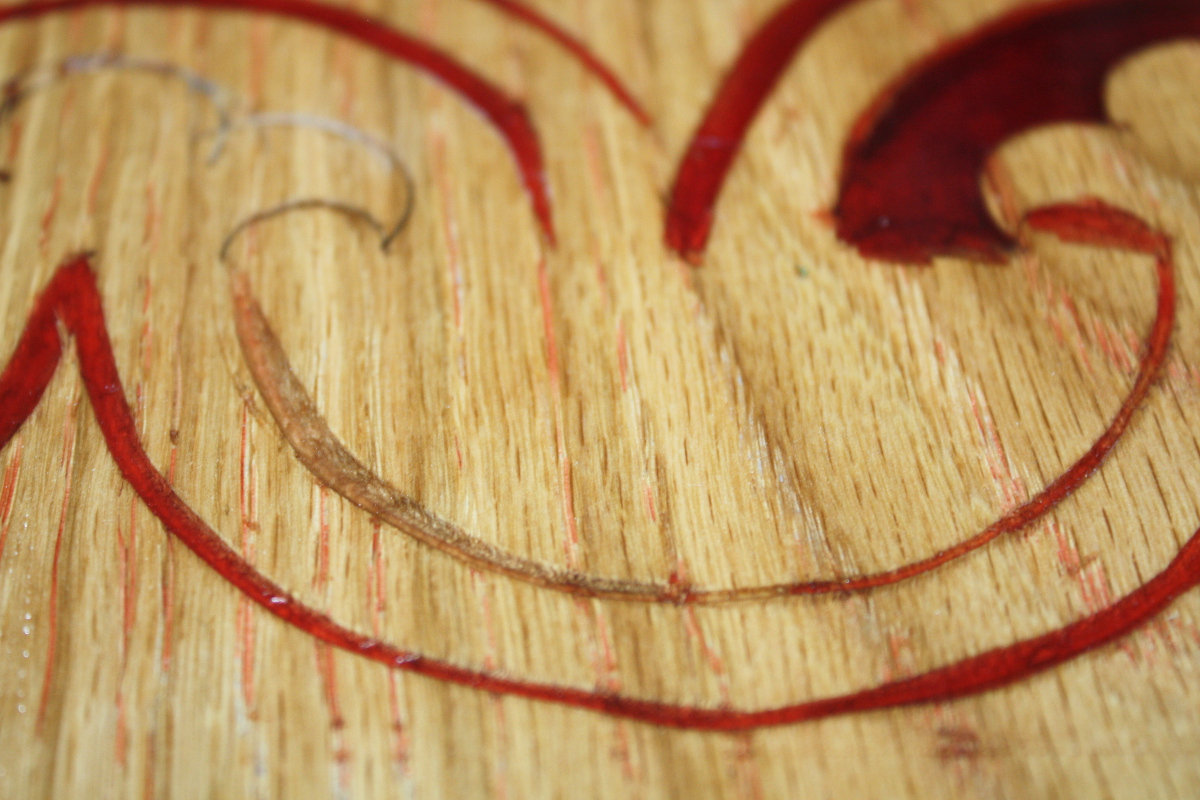So when the client for the desk likes racing cars and the Titanic, what do you do? You inlay a racetrack with stringing and banding and you add in a piece of the north Atlantic using resin 😀
Step one: that router base will not let you get an even depth across that wide a hole, so unscrew it (mangling a screw in the process and having to use a left-hand screw removal bit to dig it out) and add on a much wider shop-made wooden base:
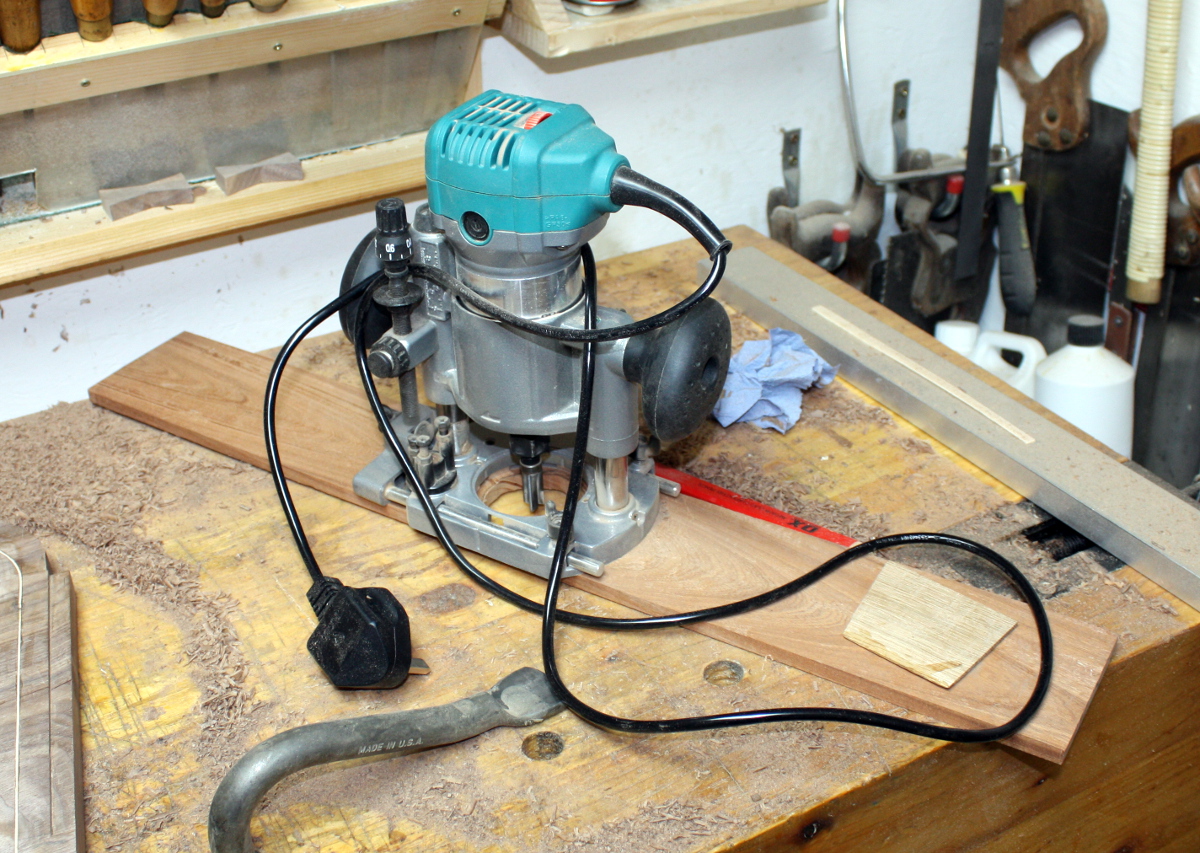
I’m willing to bet nobody else is dumb enough to use sapele for something like this (especially since plywood would be a better, flatter choice).
Step two: strap on the respirator, the goggles, the ear defenders and make sure you’re good and uncomfortable from all the PPE even before you turn on the dust collector and the router and grit your teeth against the entire process and cut down about 8mm into walnut over a good third of the surface area of the desk, staying within the lines. Which takes a good hour to do because (a) this tool terrifies me and (b) everything is sooooooo slow in case it bites, digs in and pulls the bit through several weeks of work in the blink of an eye. Or, y’know, through me.
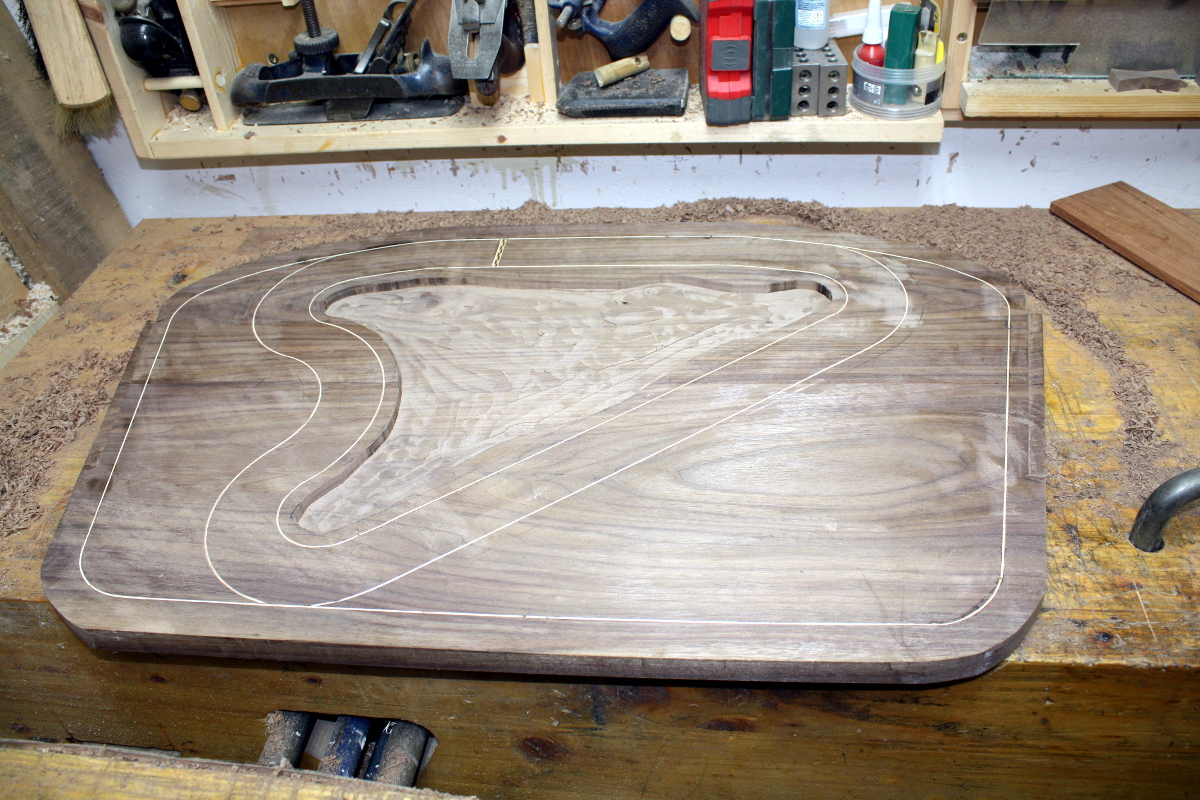
This still needs another last pass to even the sea bed out, by which time I think it’ll be 9mm down into a 21/22mm thick slab so it should still be stable, especially when the resin goes in.
Before adding the resin though, I want to seal the bed and the sides with grain filler — not the wood putty type stuff, the much much finer stuff used to seal the pores (usually in oak) to stop finishes (or in this case resin) wicking through the pores in the wood and looking bad. Once that’s done, I’m going to add reflective film on the bottom of the sea bed. I tested this a while ago, if you do this and have a light source overhead, it lightens up the resin really nicely:
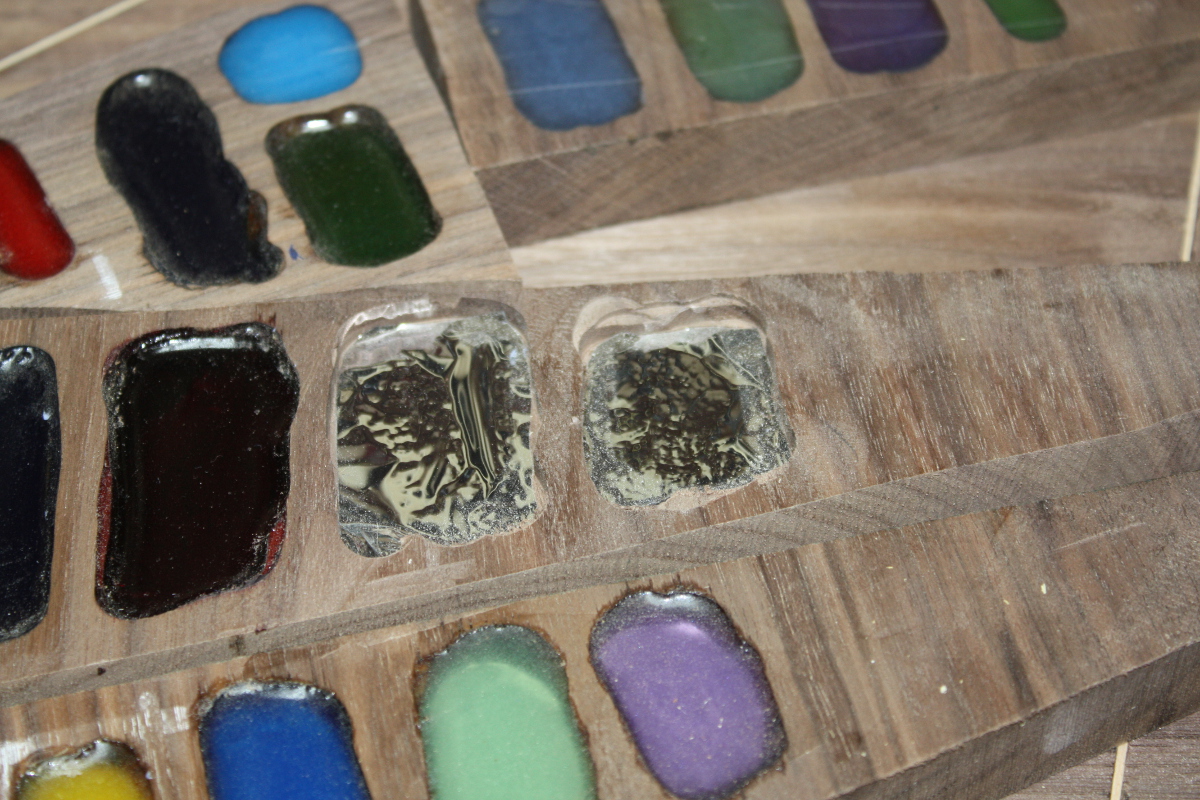
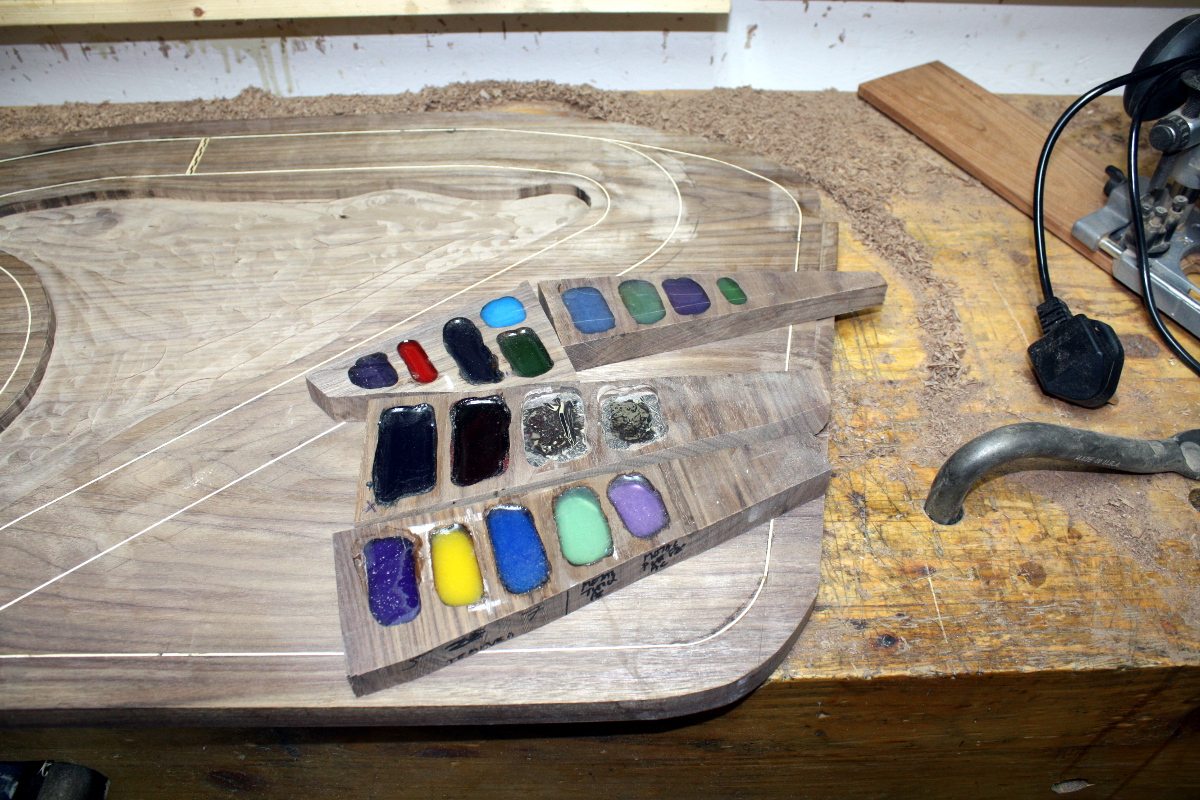
I may need to clean up the shed a bit before that though, every time I do any routing the shed looks like a small bomb went off in it and working there gets less pleasant.
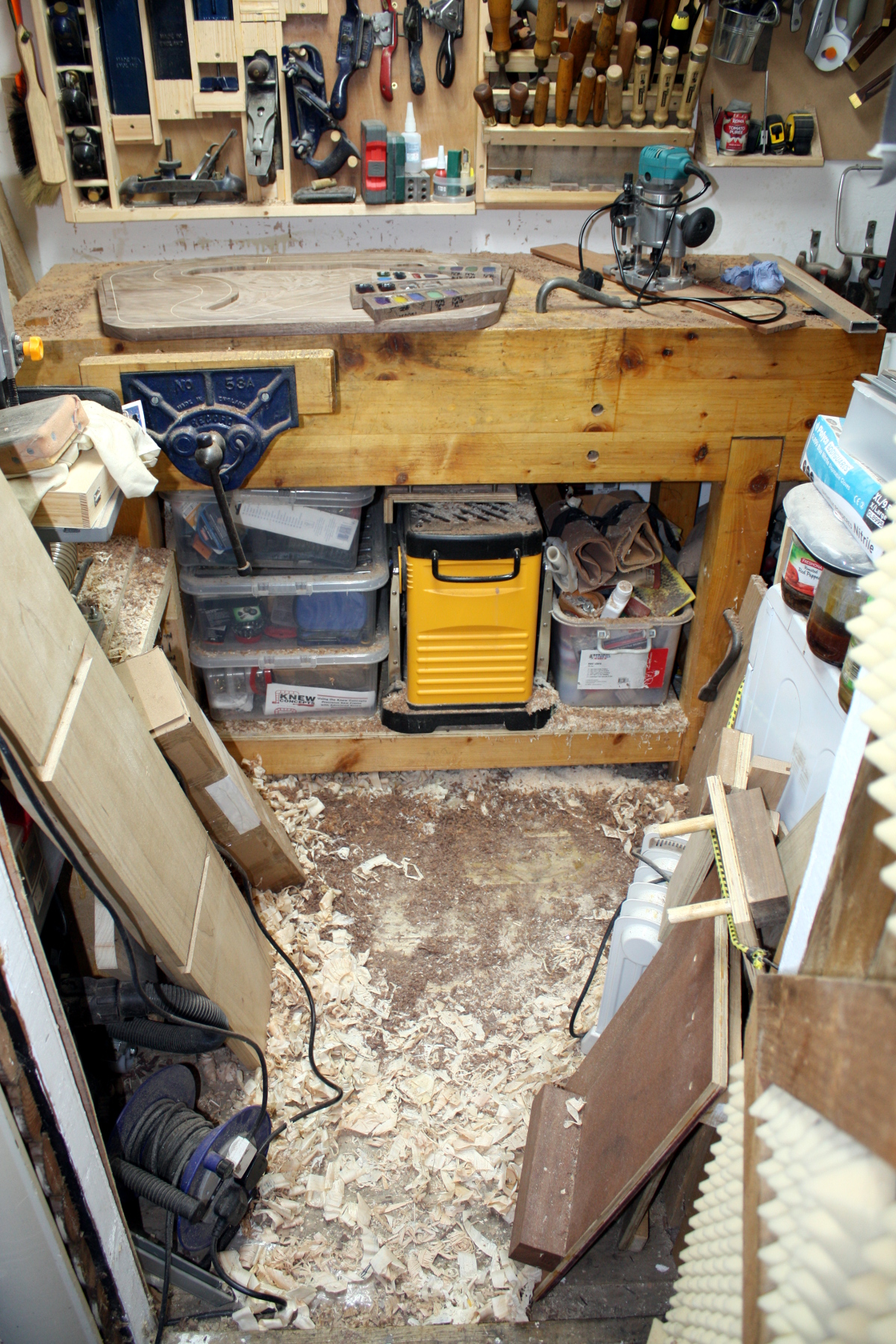
Mind you, it can’t be all that bad, it passed the customer’s testing with flying colours…
